Gleaming with geometric glamour and jazz-age exuberance, Art Deco interior design stands out as a style that marries opulence with crisp order. Its polished metals, exotic woods, and bold motifs still feel refreshingly modern, proving lavish details can live comfortably in everyday rooms. Whether you’re updating a single corner or reinventing an entire home, Art Deco ideas invite you to layer rich materials, rhythmic patterns, and subtle nods to 1920s optimism. Explore how mirrored finishes bounce light, how symmetrical layouts calm the eye, and how sculptural accents add drama — then decide which sparks will inspire your own sophisticated retreat.
1. Art Deco Statement Ceilings
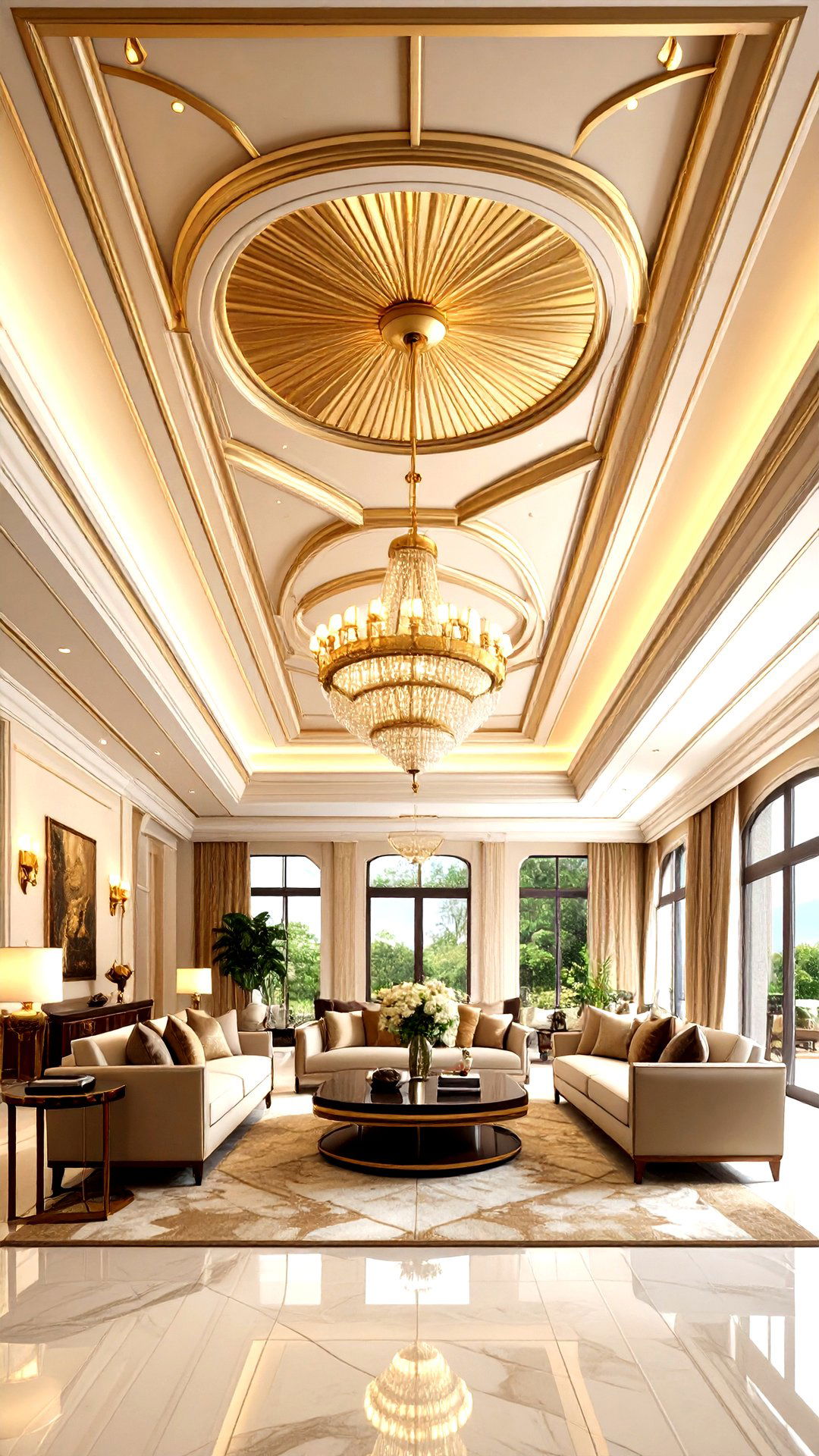
A soaring, decorative ceiling immediately crowns a room with classic Art Deco splendor. Consider installing stepped plaster coves or a sunburst medallion finished in metallic leaf, letting the geometry draw eyes upward. Paint the recessed layers in contrasting creams and champagne golds to highlight the relief, or go daring with midnight blue against polished brass strips. This technique amplifies height and reflects soft light downward, creating both grandeur and intimacy. Pair the ceiling’s graphic lines with streamlined furniture below so the space feels balanced, not busy. Even in modest rooms, a well-designed ceiling can whisper vintage glamor without overwhelming the layout.
2. Art Deco Mirrors That Multiply Light
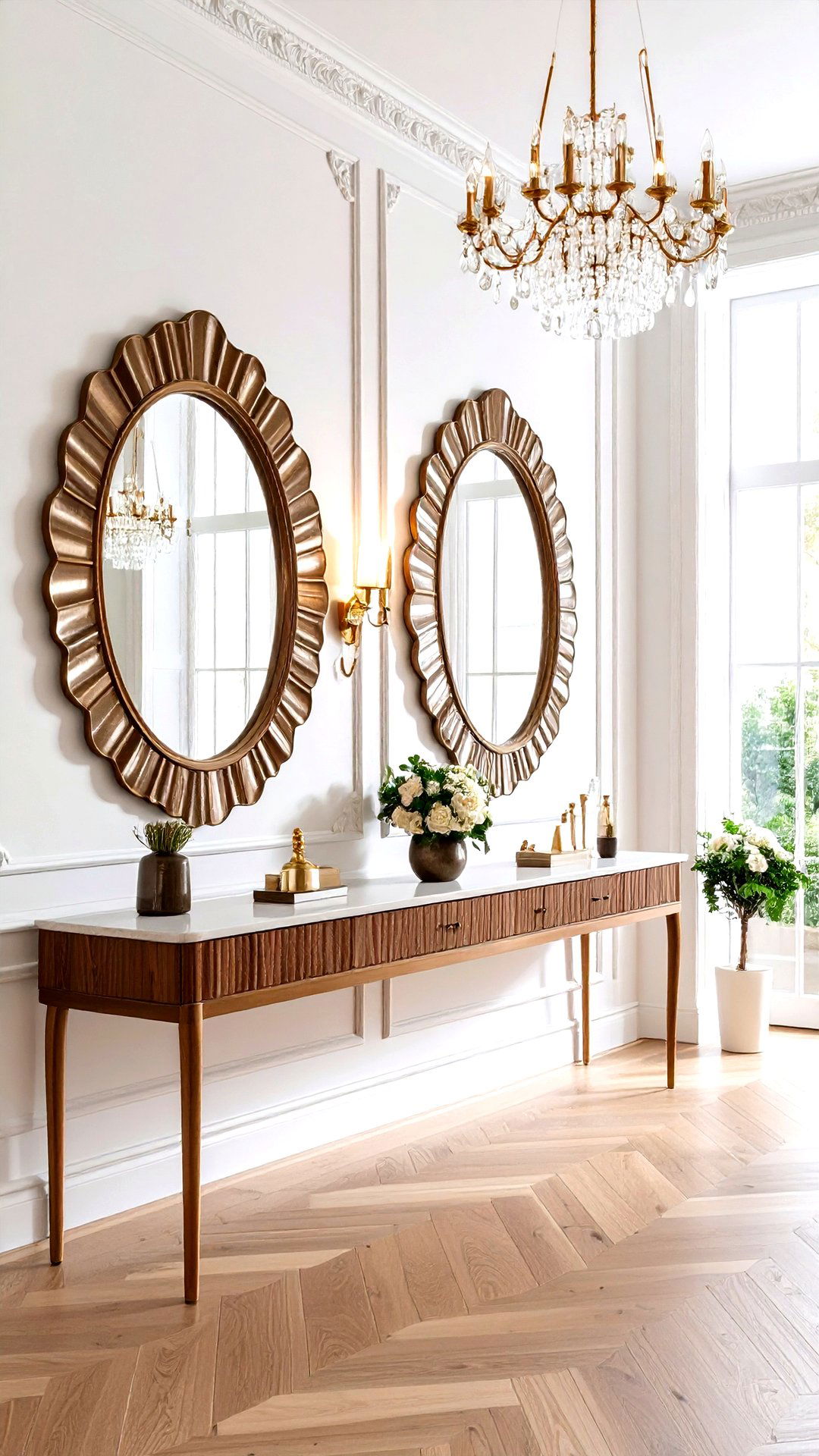
To instantly brighten and expand a space, flank a wall with large, scalloped Art Deco mirrors framed in chrome or dark walnut. The mirrored panels echo the original movement’s fascination with technology, doubling both natural light and bold decorative elements across the room. Position them opposite windows or chandeliers so reflections capture every shimmer. A symmetrical arrangement — perhaps two tall mirrors bracketing a console — creates an elegant focal point while reinforcing the style’s love of order. Keep nearby accessories minimal so the glass remains a luminous statement, making even narrow hallways or compact dining nooks feel suddenly roomy and refined.
3. Art Deco Fan Motif Wallcoverings
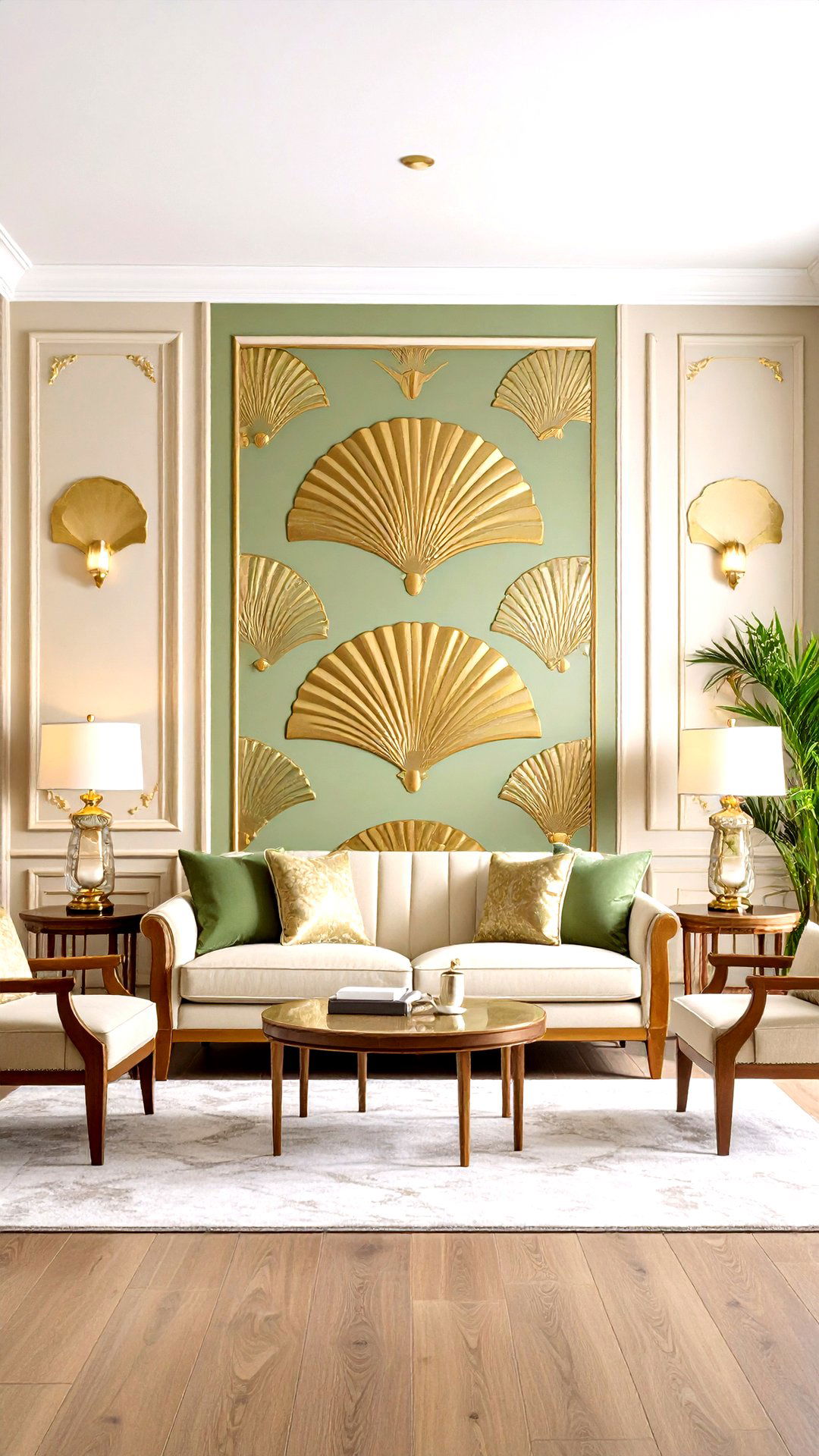
Art Deco interiors come alive through repetitive patterns inspired by shells, fans, and rising suns. Dress a feature wall in fan-motif wallpaper printed in soft sage and burnished gold to add depth without heavy color saturation. The rhythmic arcs guide the eye horizontally, visually widening small rooms. Opt for a matte background with subtle metallic inks so the design gleams only when light grazes it, preserving elegance in daylight and evening. Balance the busy print by painting adjacent walls a quiet neutral pulled from the pattern. This single wallpaper injection delivers era-authentic character while remaining sophisticated for contemporary tastes.
4. Art Deco Inlaid Flooring
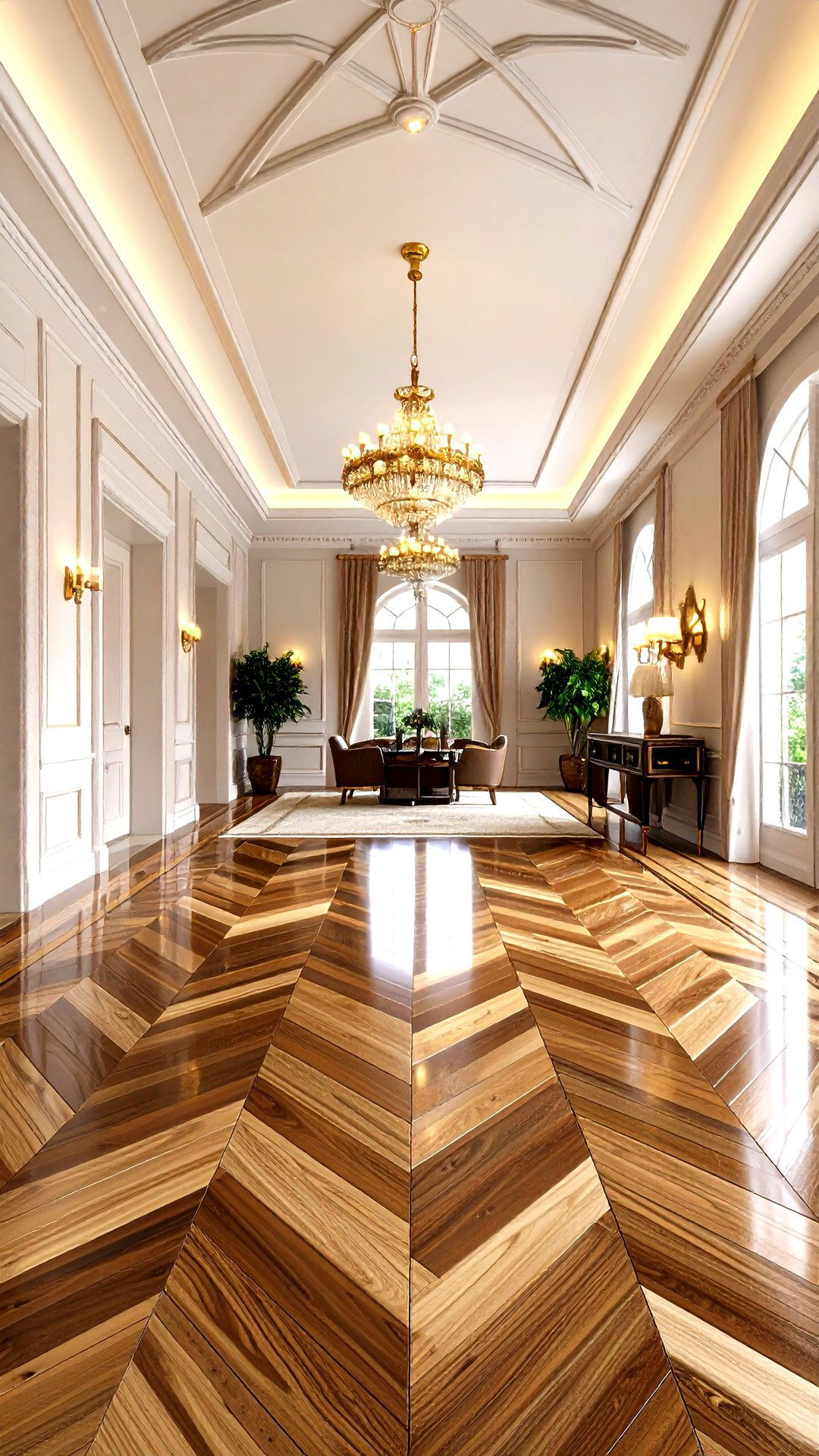
For flooring that feels like wearable jewelry, install wood parquet or stone tiles laid in intricate Art Deco patterns such as chevrons or radiating starbursts. Select contrasting timbers — walnut and maple — or black marble with ivory travertine to showcase crisp outlines. Border the design with a slim brass inlay for extra sparkle. Although the patterning looks lavish, durable finishes make it family-friendly and suitable for high-traffic areas. Keep large area rugs plain so the floor’s artistry remains visible. Every step across the surface becomes a tactile reminder of craftsmanship, anchoring the room’s symmetry and uniting furniture pieces into a coherent visual dance.
5. Art Deco Geometric Rugs
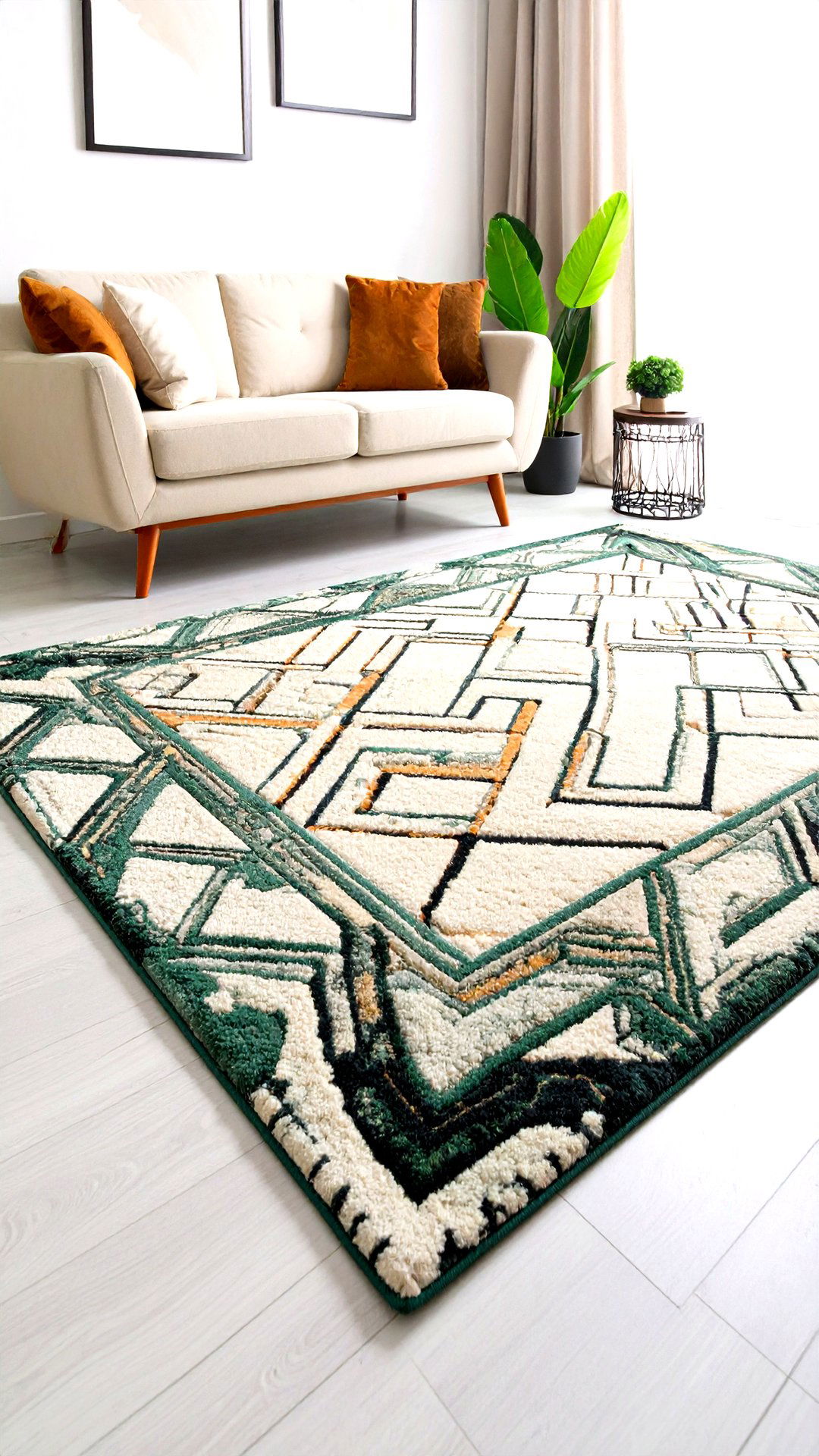
When changing structural elements isn’t feasible, roll out an Art Deco rug bursting with stepped diamonds, zigzags, or concentric rectangles. Choose plush wool colored in emerald, black, and champagne so the palette nods to luxury yet hides everyday wear. Center the rug beneath a sofa or bed to define zones in open-plan spaces, letting its straight lines guide furniture placement. Because the pattern provides strong direction, keep surrounding upholstery in solid tones. The result is a lively statement that grounds the room, allowing walls and draperies to remain quieter while still honoring Deco’s confident geometry.
6. Art Deco Chrome and Glass Lighting
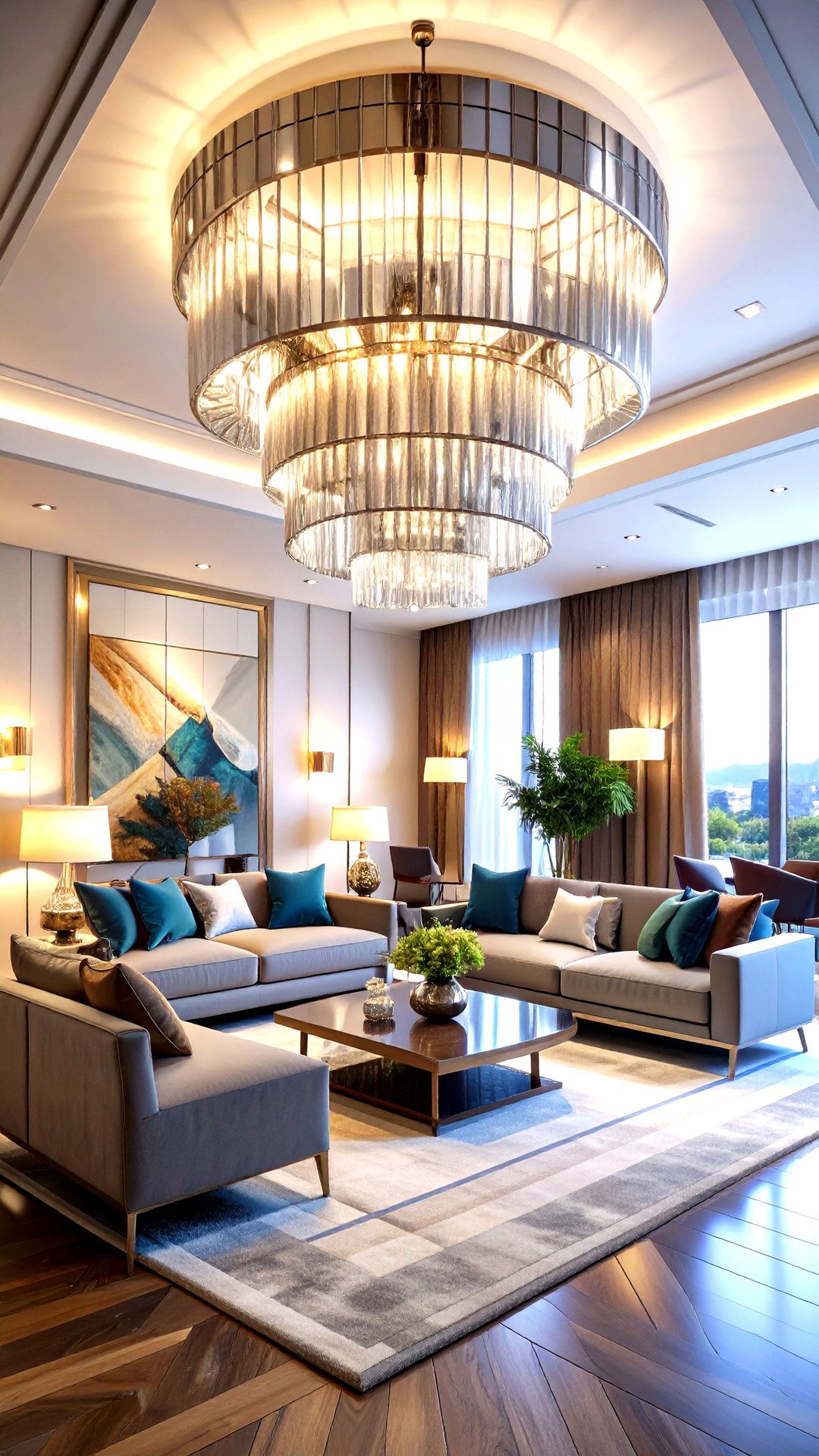
A polished chrome chandelier with tiered glass rods channels the glamor of 1930s movie palaces straight into your living room. Suspend it slightly lower than a typical fixture so the descending rings feel immersive. The glass refracts light into gentle rays, echoing the era’s fascination with speed and radiance. Complement the centerpiece with slim chrome sconces tipped in opaque globes, ensuring illumination is layered but cohesive. Dimmers grant full control — from cocktail-hour sparkle to late-night glow. Even if other décor leans eclectic, Deco lighting instantly raises sophistication while remaining practical and energy-efficient thanks to modern LED bulbs.
7. Art Deco Bold Color Blocking

Despite its association with metallics, Art Deco also embraced daring blocks of color. Paint built-in bookcases a deep petrol blue and surrounding moldings crisp white to create graphic contrast reminiscent of 1920s posters. The strong divide outlines architecture, making plain alcoves appear custom-crafted. Finish with brushed-steel handles and monochrome books or ceramics so visual noise stays low. Because the palette is concentrated in specific panels, the room feels orderly, not chaotic. This strategy lets renters or budget renovators achieve Deco punch through paint alone, transforming everyday millwork into a striking celebration of line and hue.
8. Art Deco Ornamental Screens
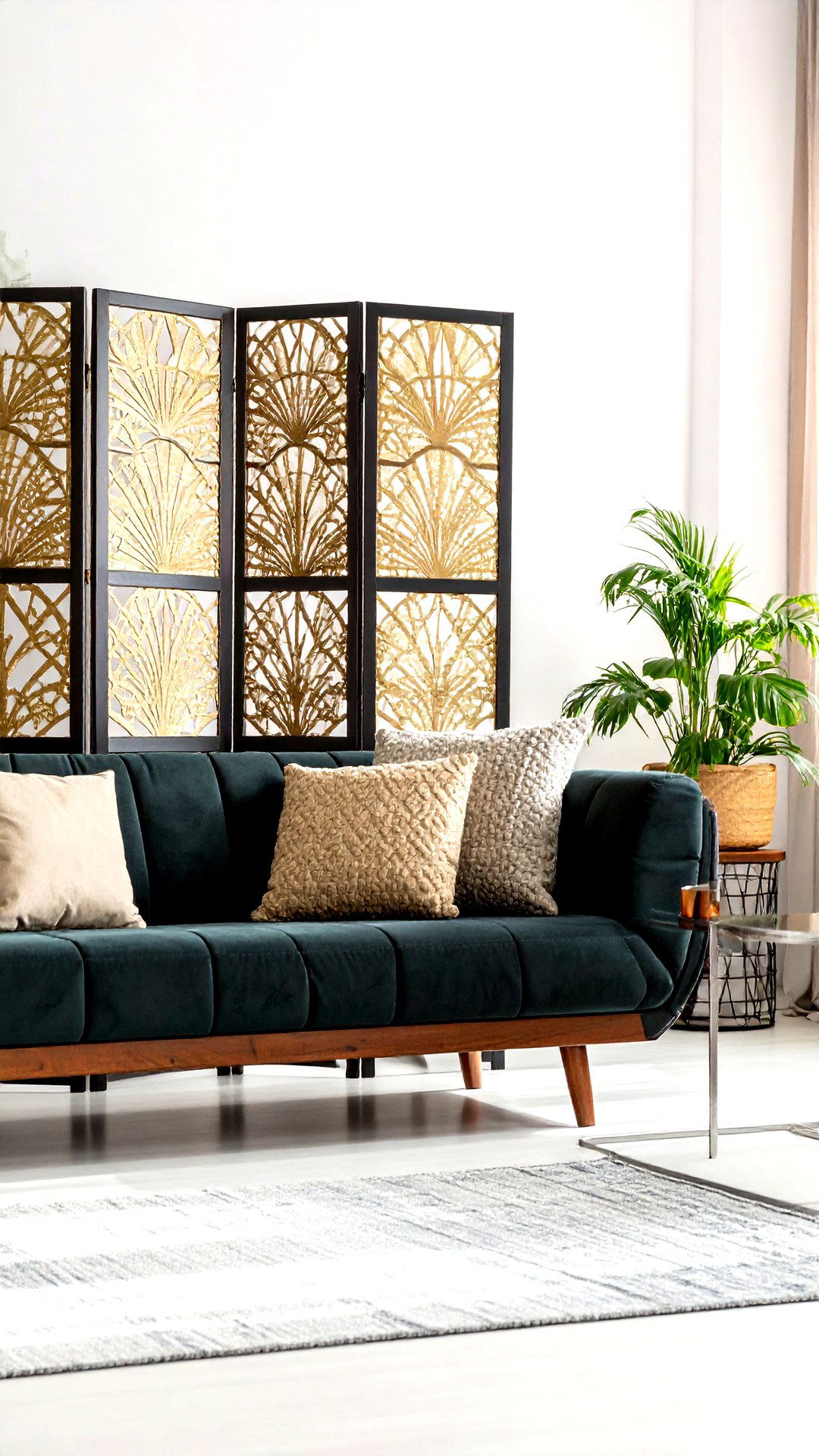
In spacious lofts or multifunctional rooms, freestanding Art Deco screens solve layout challenges while adding sculptural flair. Select a folding divider with lacquered black frames and perforated brass panels featuring fan cutouts. Position it behind a sofa to carve out a reading zone or place it near entryways for a stylish drop zone backdrop. The screens’ movable nature echoes the period’s appetite for theater scenery, allowing you to shift ambiance effortlessly. Because they filter rather than block light, spaces remain bright yet feel distinct. Pair with streamlined furniture so the ornate lattice takes center stage without crowding the floor plan.
9. Art Deco Lacquered Furniture Accents
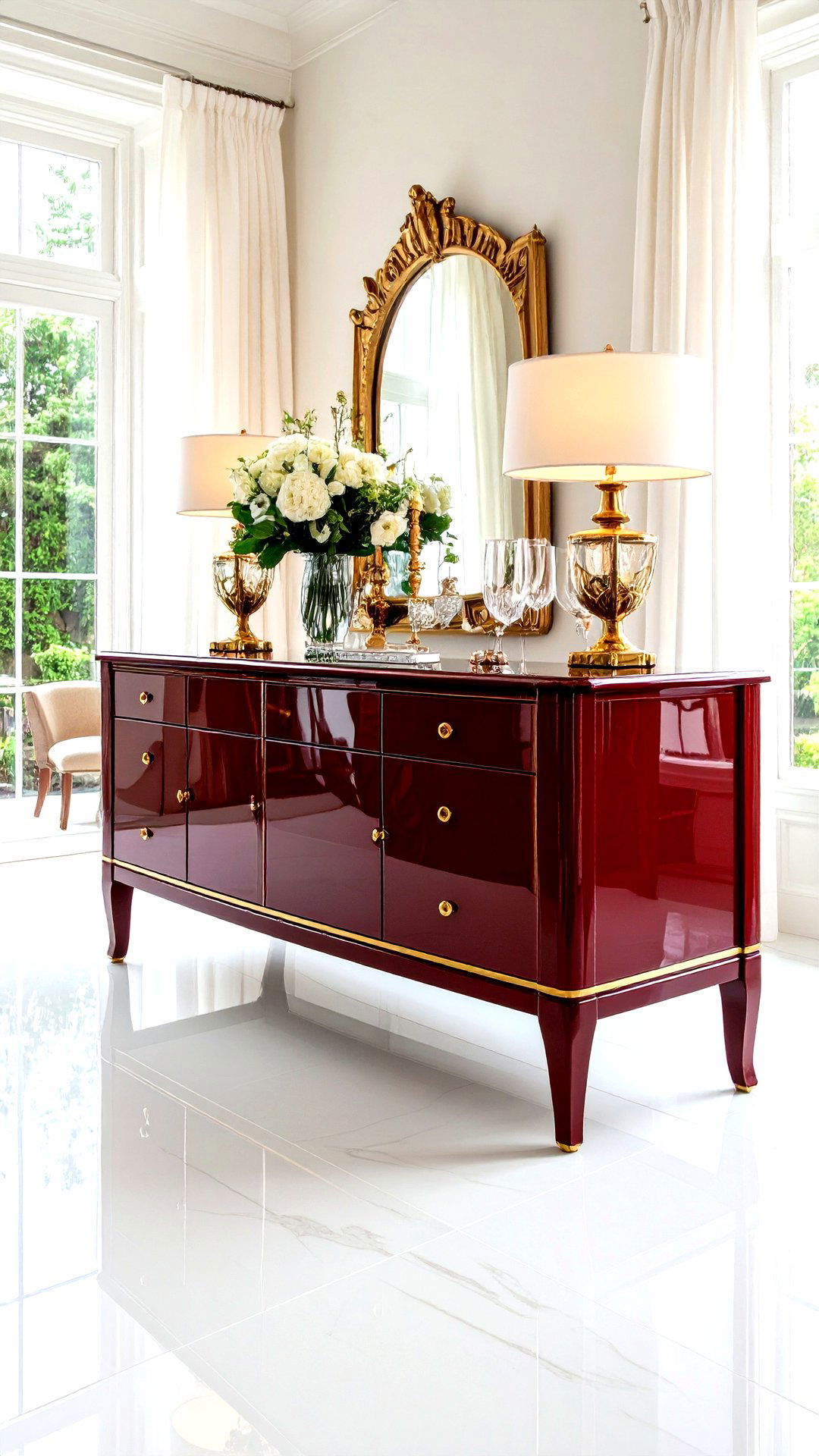
Glossy lacquer was a hallmark material, prized for its sleek finish and depth. Introduce a burgundy lacquered sideboard trimmed in slim brass banding as a dining-room statement. The mirror-like surface bounces candles and glassware light, doubling the glamour factor at dinner parties. Inside, keep table linens or board-game stashes organized, proving function can coexist with fashion. Maintain the sideboard’s spotlight by pairing it with understated upholstered chairs and simple linen drapes. Occasional polishing preserves its shine, and touch-up kits mend small scratches, ensuring your Art Deco piece remains a long-term star rather than a fleeting trend.
10. Art Deco Stepped Mantelpieces
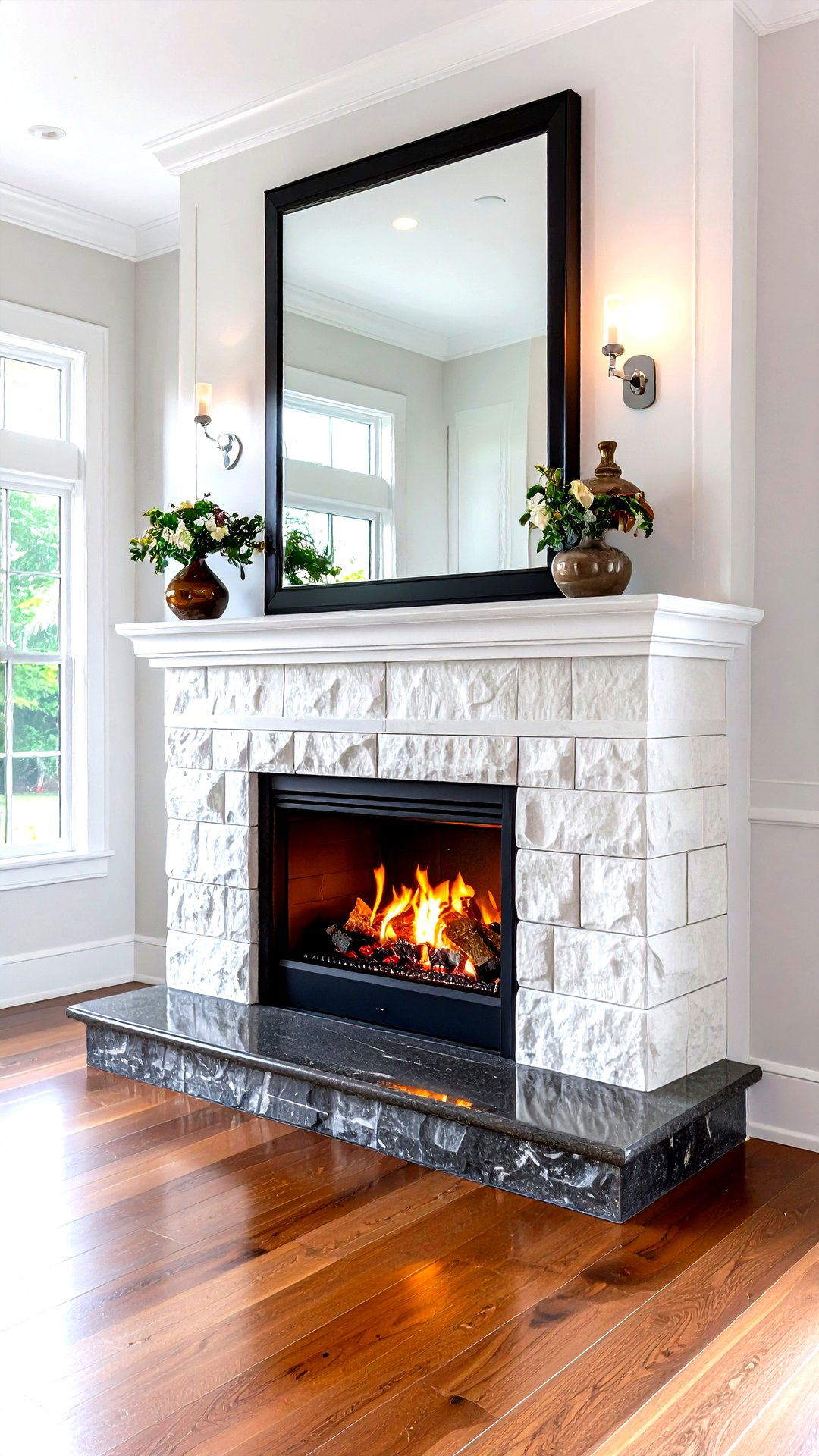
A fireplace mantle layered in progressive steps instantly communicates Deco sophistication. Frame the firebox with honed black granite, then build outward with successively wider limestone tiers, echoing iconic Manhattan skyscrapers. The graduated edges draw eyes vertically, giving modest ceiling heights a subtle boost. Complete the look by mounting a rectangular mirror above, its corners softened with chrome clips. Avoid overcrowding the ledge; a single sculptural vase or a pair of obelisk candlesticks reinforces the era’s streamlined ethos. Even when the hearth is unlit, the stepped composition radiates architectural strength and offers a timeless centerpiece for gatherings.
11. Art Deco Glam Velvet Seating
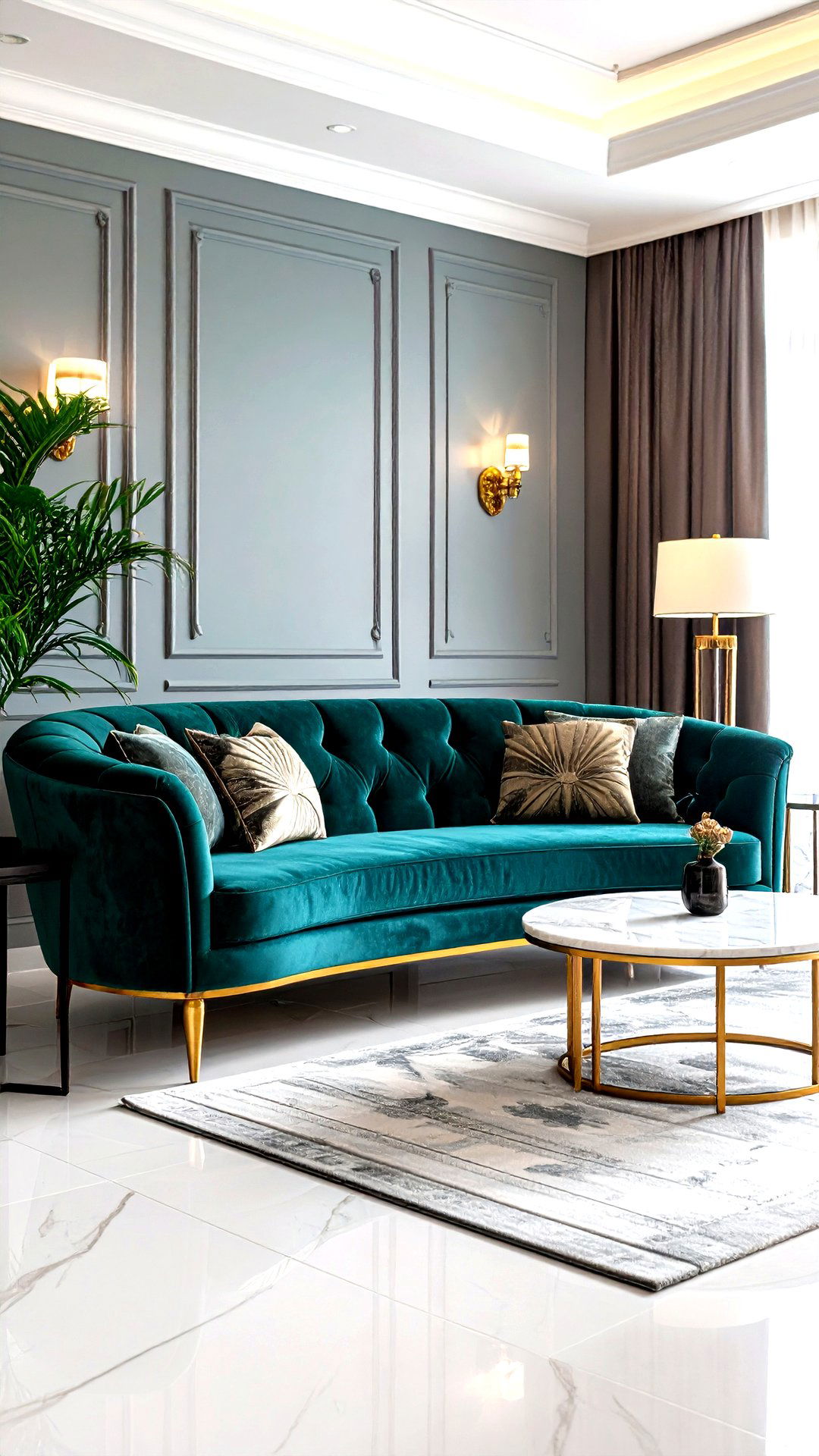
Velvet’s plush texture pairs perfectly with Art Deco’s love for indulgence. Choose a curved sofa upholstered in teal velvet and set atop slim brass legs, referencing both softness and metallic brightness. The rounded silhouette breaks up the style’s predominant straight lines, adding balance. Scatter two contrasting jacquard cushions bearing fan patterns for subtle thematic linking. Regular vacuuming and an occasional fabric shaver keep the pile pristine. Because velvet invites touch and light plays differently over its nap, the seating becomes an experiential anchor — drawing people to sink in, converse, and absorb the surrounding Deco elements.
12. Art Deco Black-and-White Bathrooms
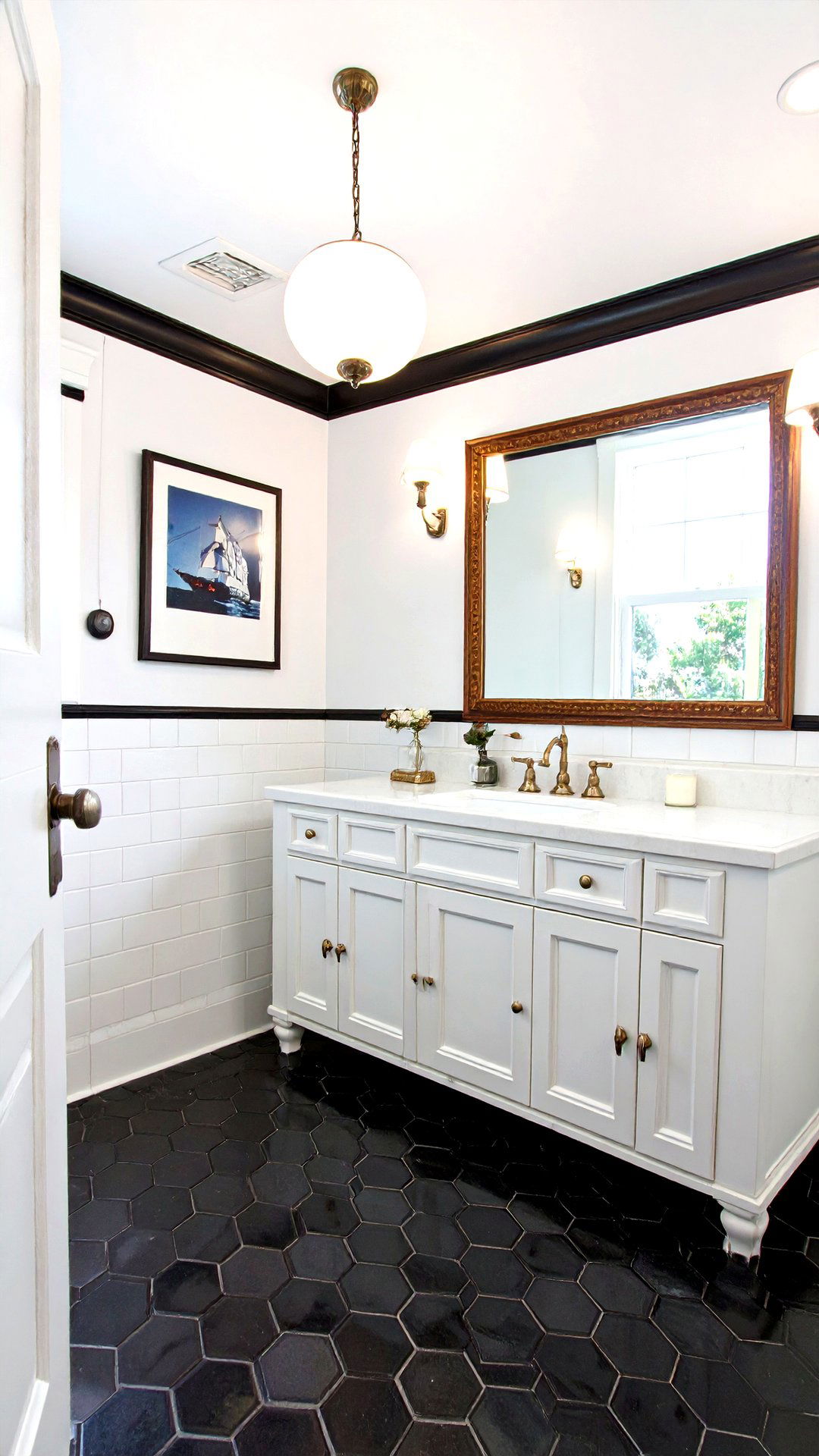
Monochrome bathrooms were an Art Deco staple, prized for hygienic appearance and crisp contrast. Lay small black hexagonal floor tiles bordered by white subway walls capped with a glossy black bullnose trim. Install a pedestal sink with fluted sides and add chrome faucets sporting lean, vertical handles. A frosted-glass globe pendant diffuses flattering light while echoing geometric themes. Even compact powder rooms gain stature from this scheme because contrasts sharpen lines. Finish with a single framed poster of a 1920s ocean-liner advertisement to tie the era together without cluttering precious wall real estate.
13. Art Deco Metallic Trim Detailing
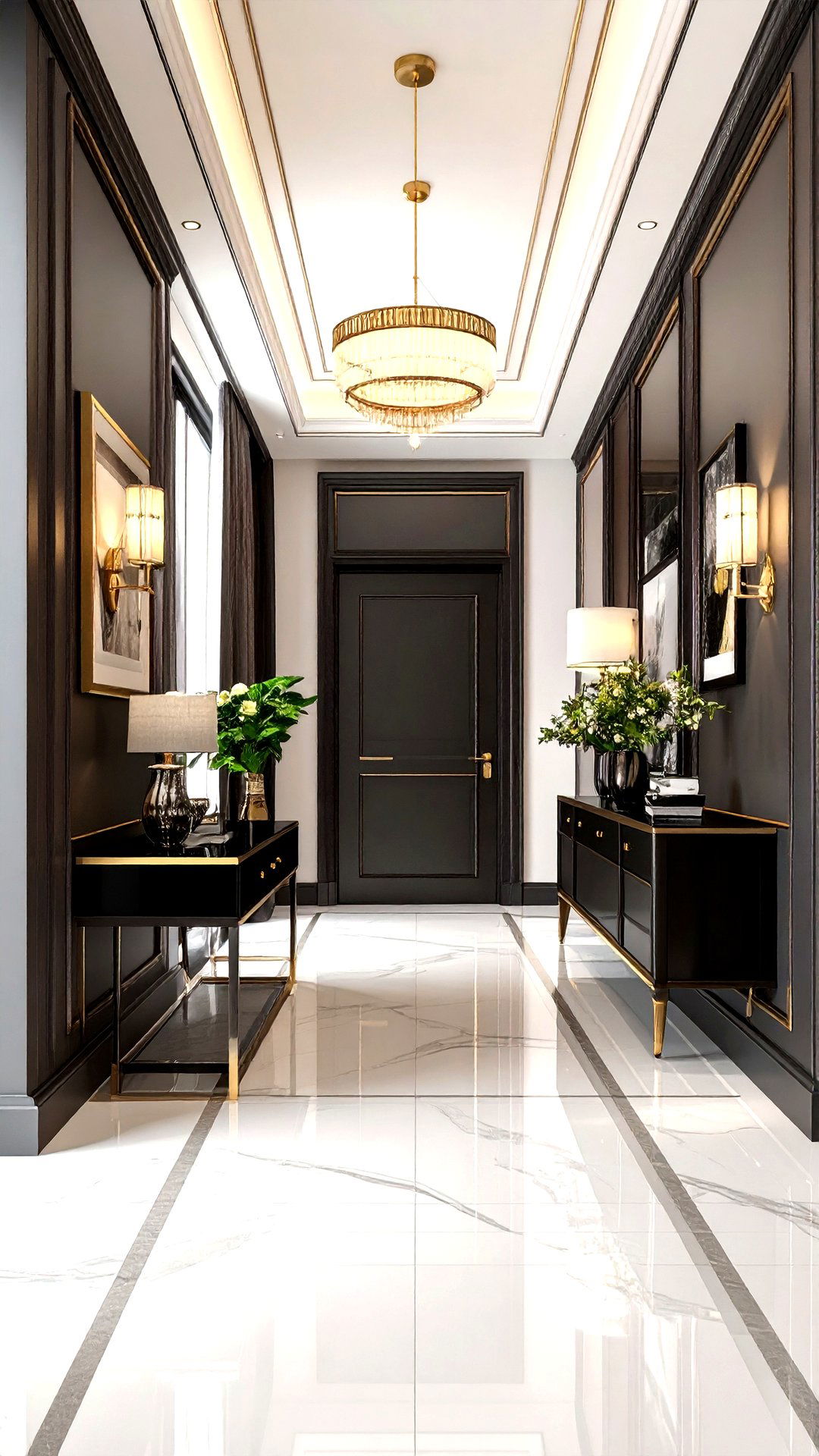
Thin metallic strips turn plain surfaces into Deco masterpieces. Affix narrow brass or chrome banding around door panels, furniture edges, or built-in shelving to create crisp outlines reminiscent of vintage elevators. The reflective accents highlight shape without adding visual weight, letting dark lacquer or matte paint sing beside the shine. Use peel-and-stick metal tape for renter-friendly experimentation, or invest in custom inlays for a permanent upgrade. By repeating the trim on multiple elements — perhaps doors, a coffee-table top, and picture frames — you weave a subtle, unifying thread that dignifies the entire space with understated luxury.
14. Art Deco Frosted Glass Doors
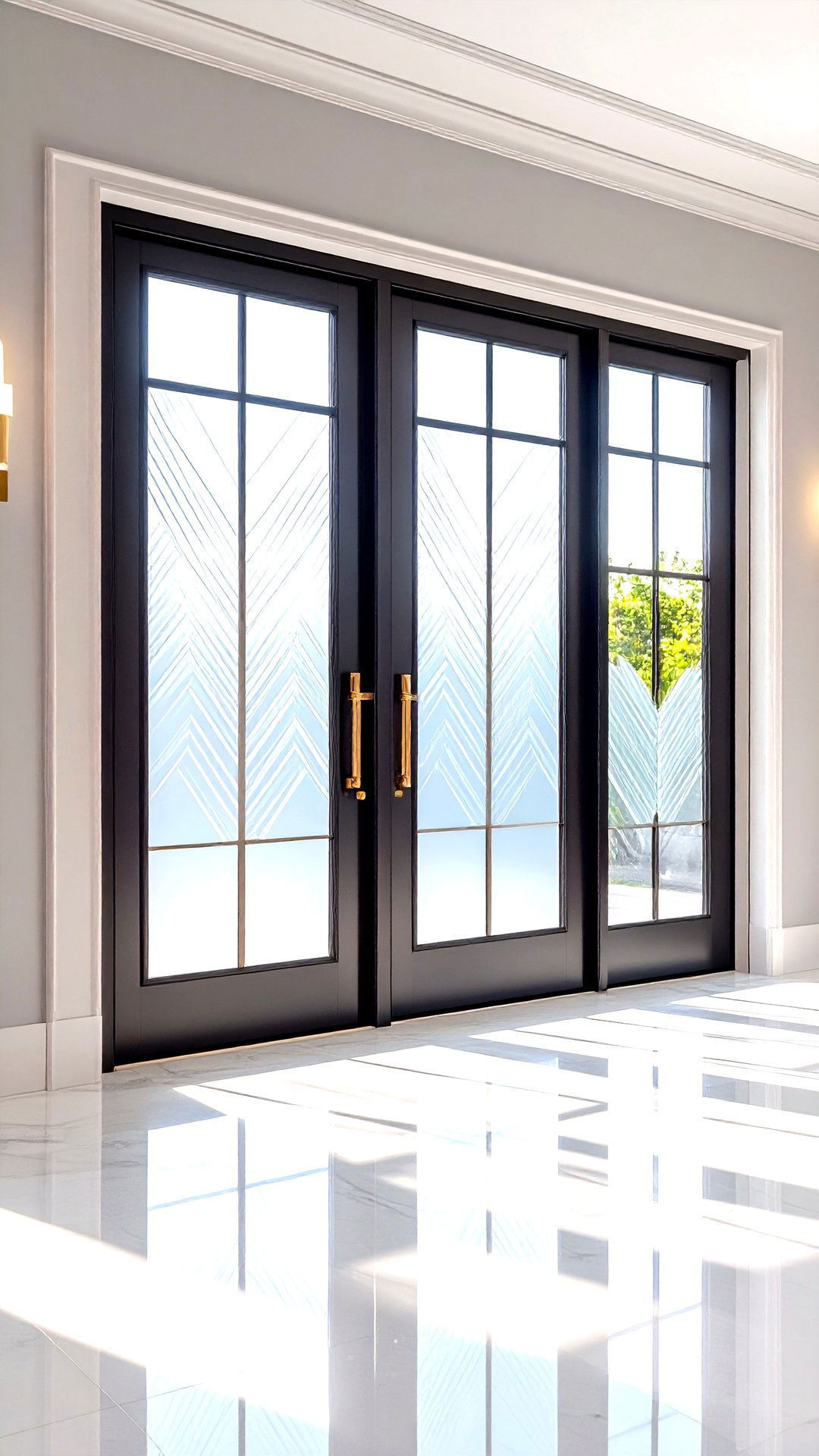
Swap solid pantry or bathroom doors for frosted-glass panels etched with chevron or skyscraper motifs. These translucent surfaces maintain privacy while borrowing light from hallways, solving the problem of dim interior rooms. Antique shops often stock salvage pieces, but new manufacturers replicate the style using tempered safety glass for durability. Paint the door frames high-gloss black or forest green so the etched pattern pops. When sunlight filters through, shadows of the design bloom on surrounding floors, bringing the art of light play — a central Deco theme — into everyday routines.
15. Art Deco Sculptural Table Lamps
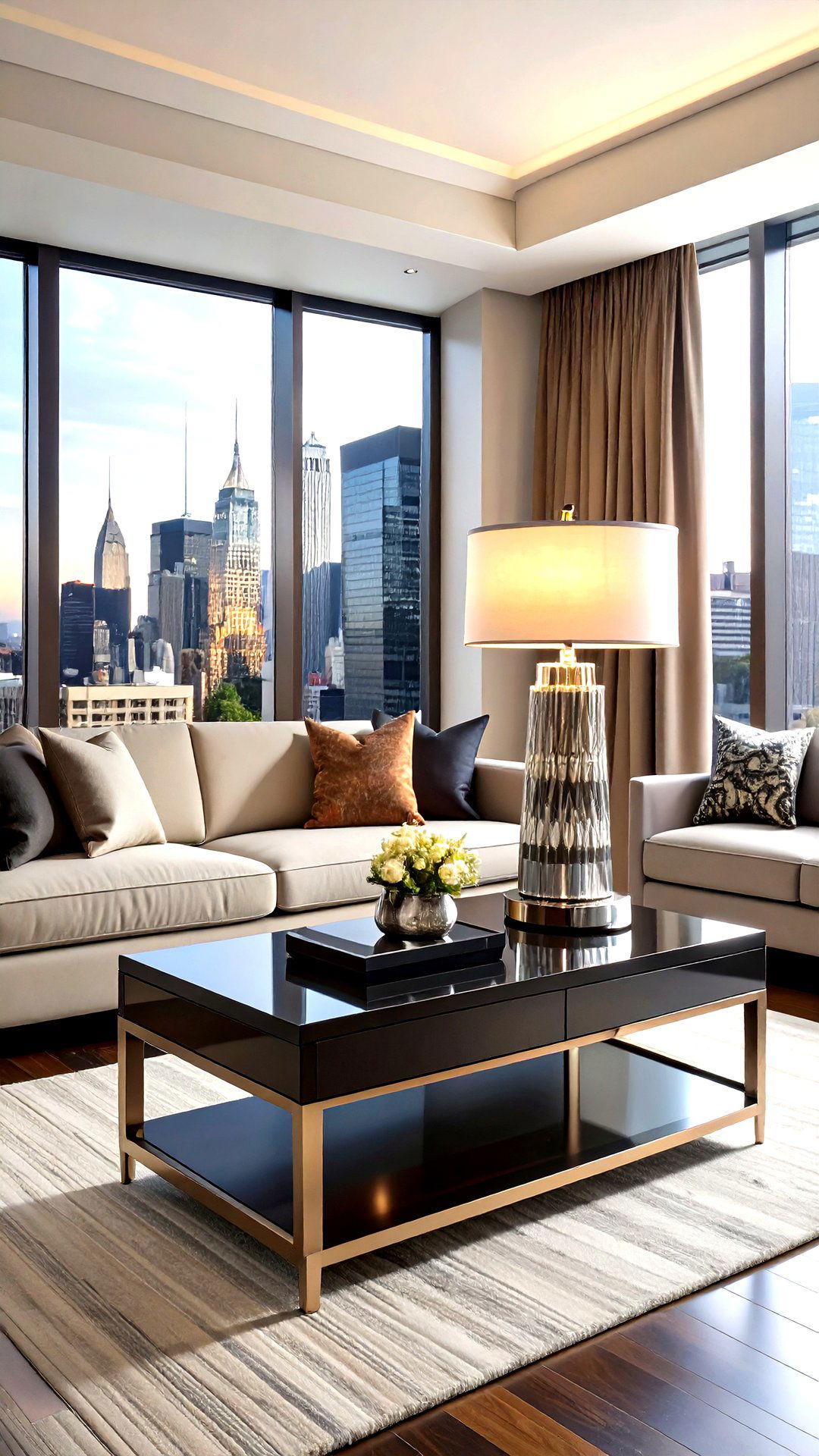
Desktop or bedside lighting doubles as functional art when you select stepped obelisk or stylized figurine lamps finished in chrome. Fit them with tiered frosted shades that nod to stacked ziggurats, casting a soft, ambient glow ideal for reading. Place lamps in symmetrical pairs on console tables or nightstands to reinforce order. LED bulbs disguised as vintage filaments blend modern efficiency with period aesthetics. Their petite footprint suits apartments where grand chandeliers feel oversized, allowing small corners to showcase Art Deco character without demanding structural changes.
16. Art Deco Patterned Upholstery
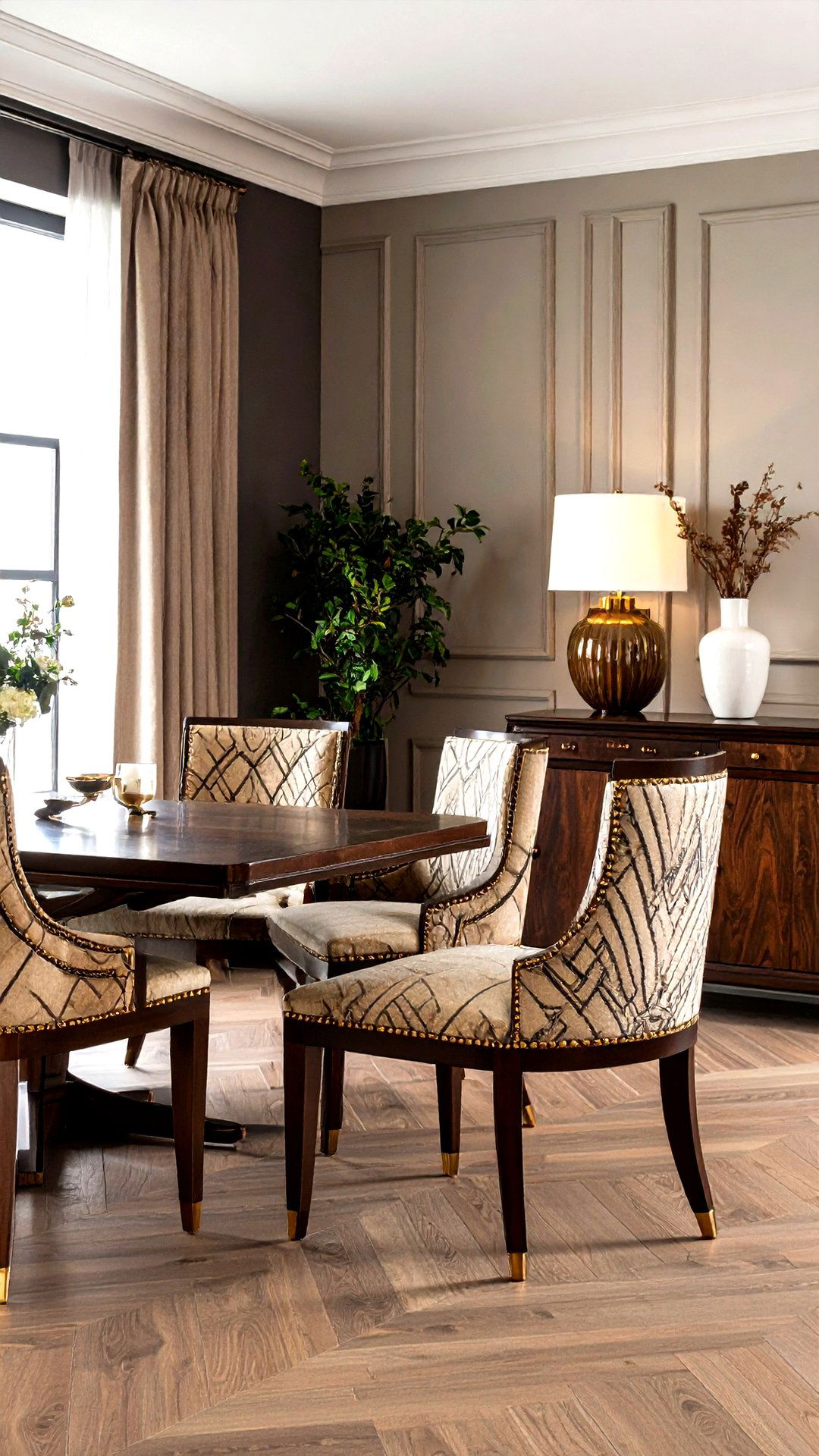
Reupholster dining chairs or a boudoir bench in jacquard fabric woven with intersecting arcs and angular lines. Opt for colors like ivory on charcoal or blush on navy to keep the motif recognizable yet sophisticated. Tight, tailored cushions emphasize the style’s preference for crisp tailoring over loose slipcovers. Scotch-guard treatments protect fabric from spills, making the choice practical for households with pets or kids. By concentrating pattern on a handful of seats while nearby sofas remain solid, you introduce Deco flair that can easily be refreshed when trends shift.
17. Art Deco Terrazzo Accents
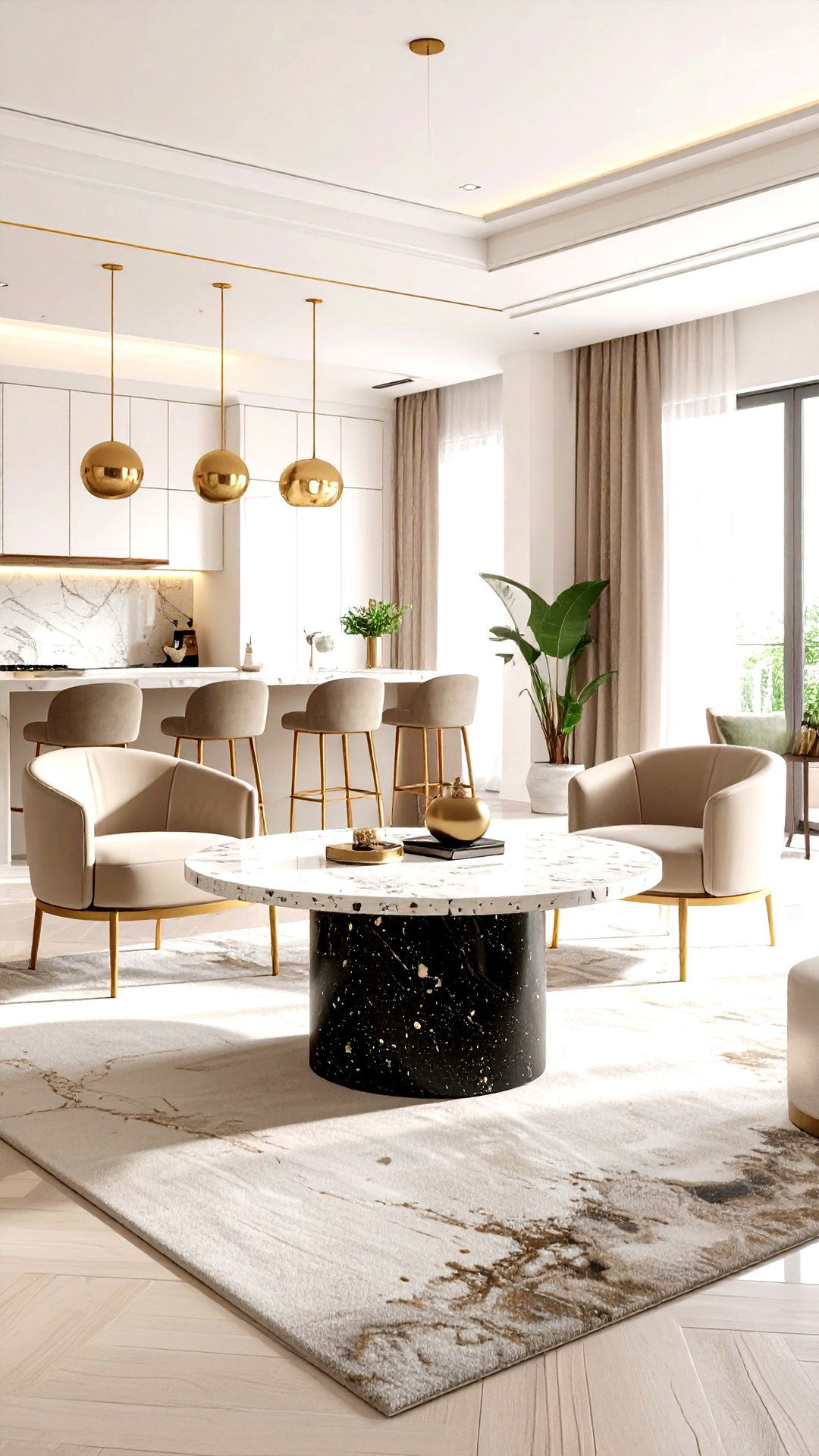
Terrazzo flooring and countertops peaked in popularity during Art Deco’s golden years. Revive the material through a coffee table or kitchen island featuring large marble chips set in dark cement, then finish with a honed polish to reveal graphic speckles. The random yet controlled pattern complements Deco’s balance between ornament and order. Pair the terrazzo piece with matte brass stools and streamlined cabinetry so the surface shines. Because modern terrazzo is typically sealed for easy care, it suits busy households seeking heritage charm minus high maintenance.
18. Art Deco Streamlined Hardware
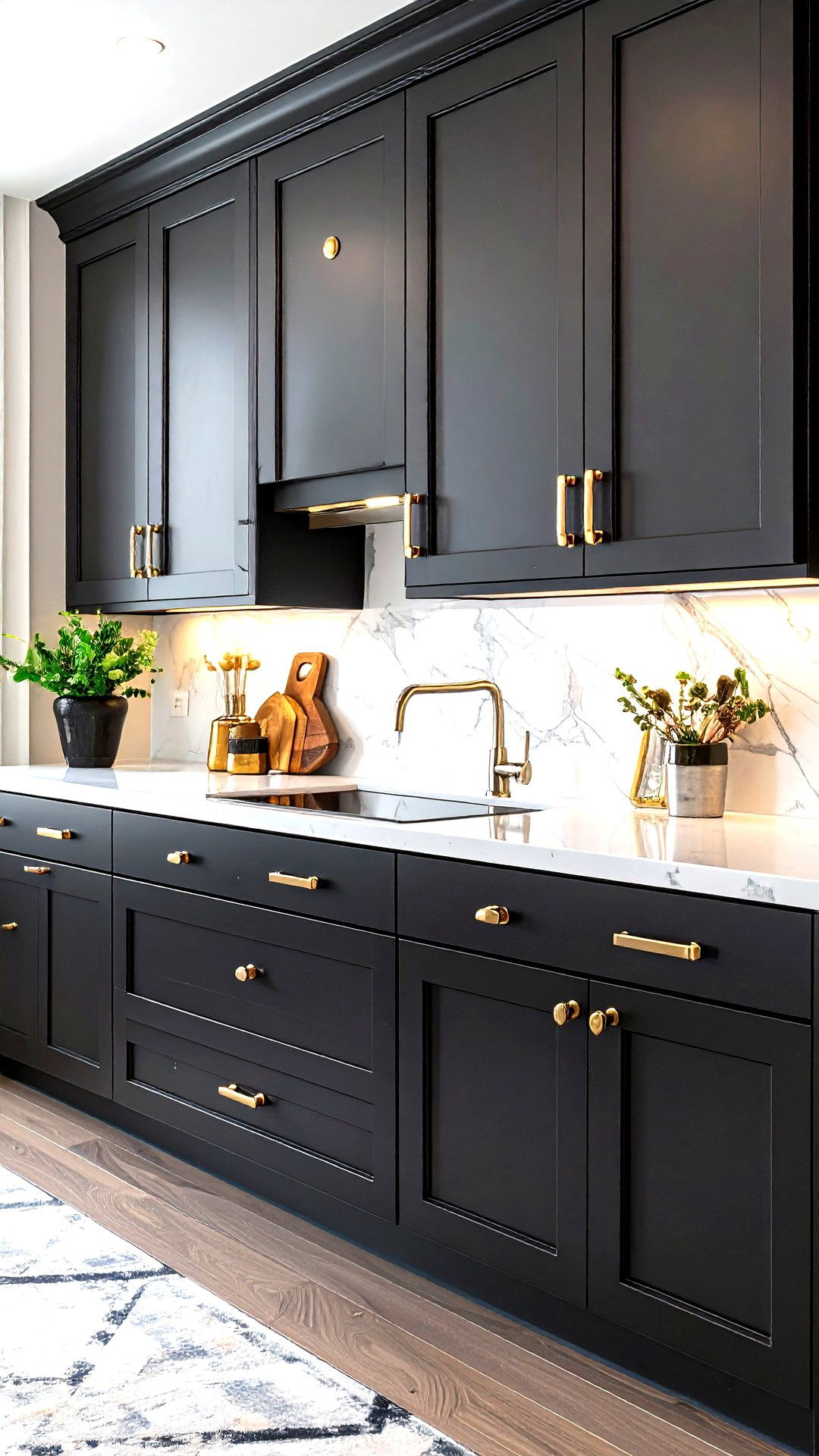
Sometimes small swaps make the biggest stylistic impact. Replace plain doorknobs and drawer pulls with stepped, hexagonal, or skyscraper-shaped hardware in polished nickel. The facets catch light and subtly reference urban skylines without overwhelming cabinetry. Measure existing hole spacing before purchase to avoid drilling new openings. Coordinating hinges and curtain rod finials maintain visual consistency, while matte paint on surrounding wood lets the metal gleam. The upgrade takes only an afternoon but instantly threads cohesive Art Deco detailing through multiple rooms.
19. Art Deco Bold Artwork Groupings
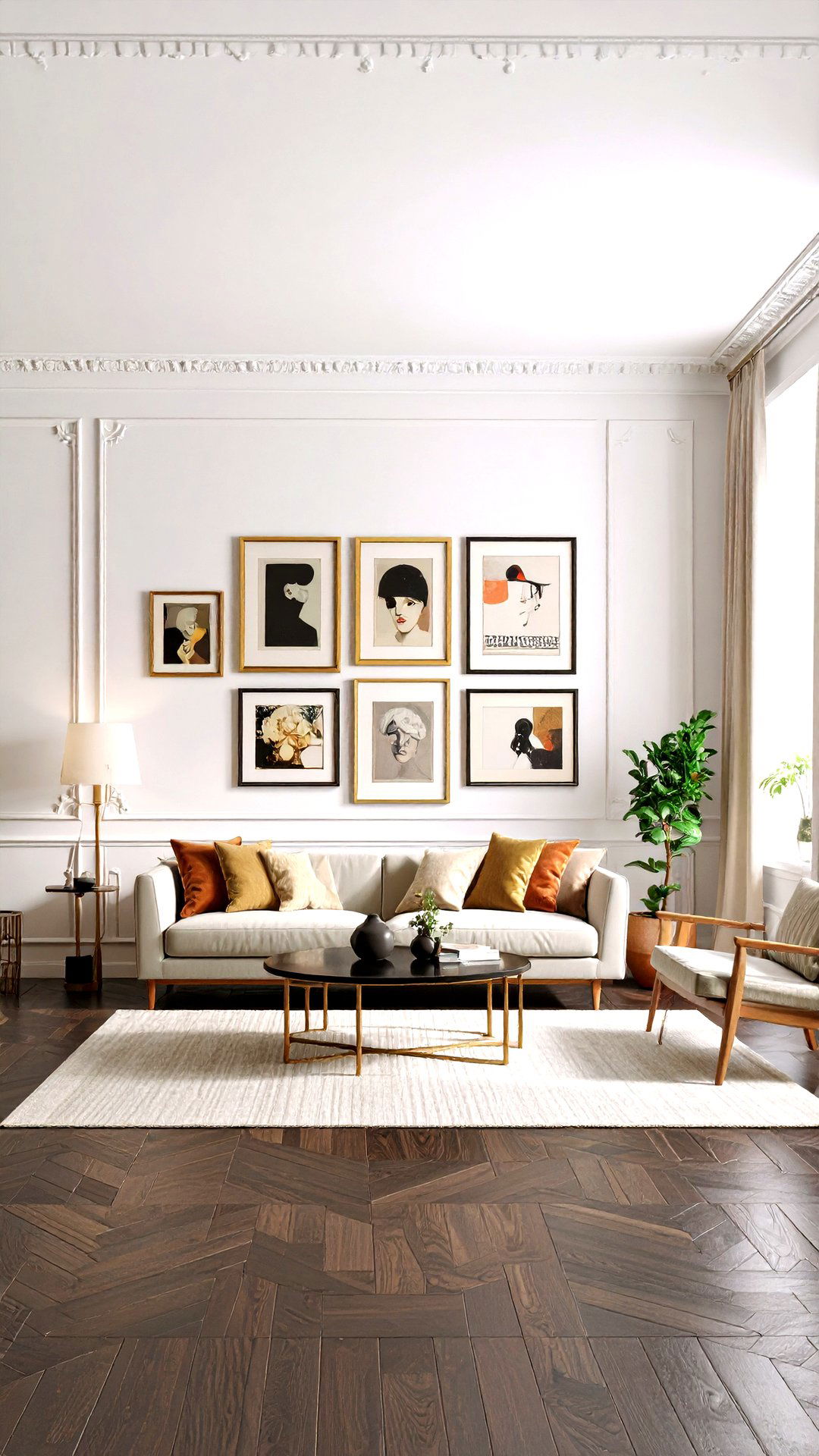
Curate a gallery wall of vintage travel posters, abstract cubist prints, or stylized portraits framed in black and gold. Hang pieces in precise rows with equal spacing, mirroring Art Deco’s orderly nature. Choose art featuring rich jewel tones or sunburst motifs to reinforce the theme. Use identical frame profiles so the arrangement reads as one installation, allowing varied imagery to coexist harmoniously. Picture-hanging strips make repositioning simple until spacing feels perfect. This display turns blank walls into museums of Deco culture, sparking conversation while visually stretching ceiling heights through vertical alignment.
20. Art Deco Marble and Metal Cocktail Tables

Center your living room with a round marble-top cocktail table perched on intersecting brass bars. The circle softens the style’s frequent straight edges while the metal base adds reflective drama. Opt for white marble streaked with subtle gray veining to keep the look bright and easy to coordinate. Use coasters to protect the stone and felt pads beneath the frame to safeguard floors. The mix of weighty marble and airy metal encapsulates Deco’s knack for balancing substance and elegance, making the table both centerpiece and conversation starter.
21. Art Deco Faceted Wall Panels
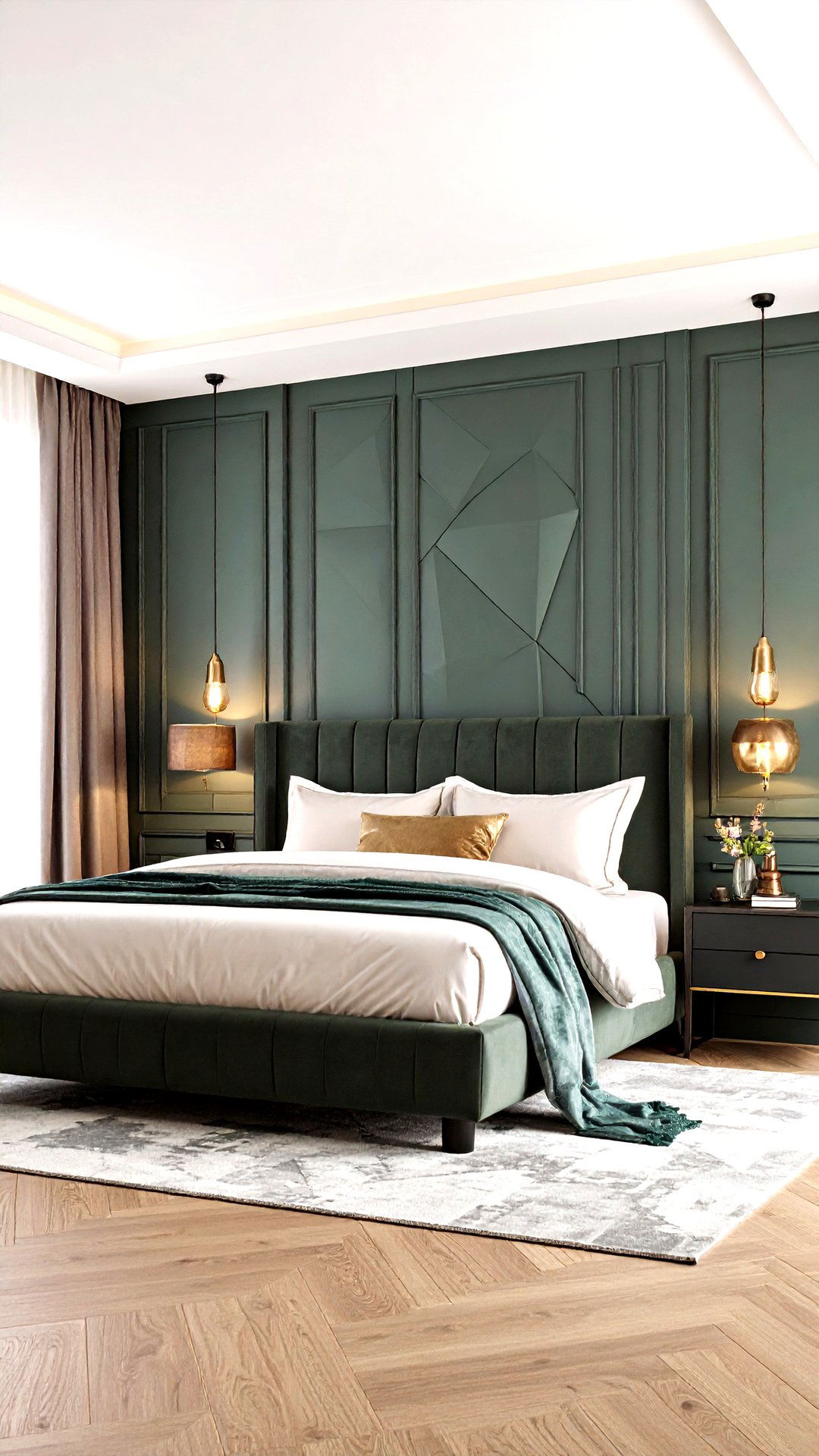
Install three-dimensional MDF panels carved into geometric facets, then paint them a satin charcoal for depth. Intermittent uplights wash over the relief, creating shadow play reminiscent of cinema marquees. This architectural treatment works behind a bed as a dramatic headboard extension or along a hallway to replace plain wainscoting. Because panels arrive in interlocking sections, DIY installation is achievable with basic carpentry skills. The result is a tactile backdrop that feels custom and pricey, yet costs far less than carved stone. It embodies Art Deco’s love for bold texture and theatricality without requiring historic plasterwork.
22. Art Deco Jewel-Tone Draperies
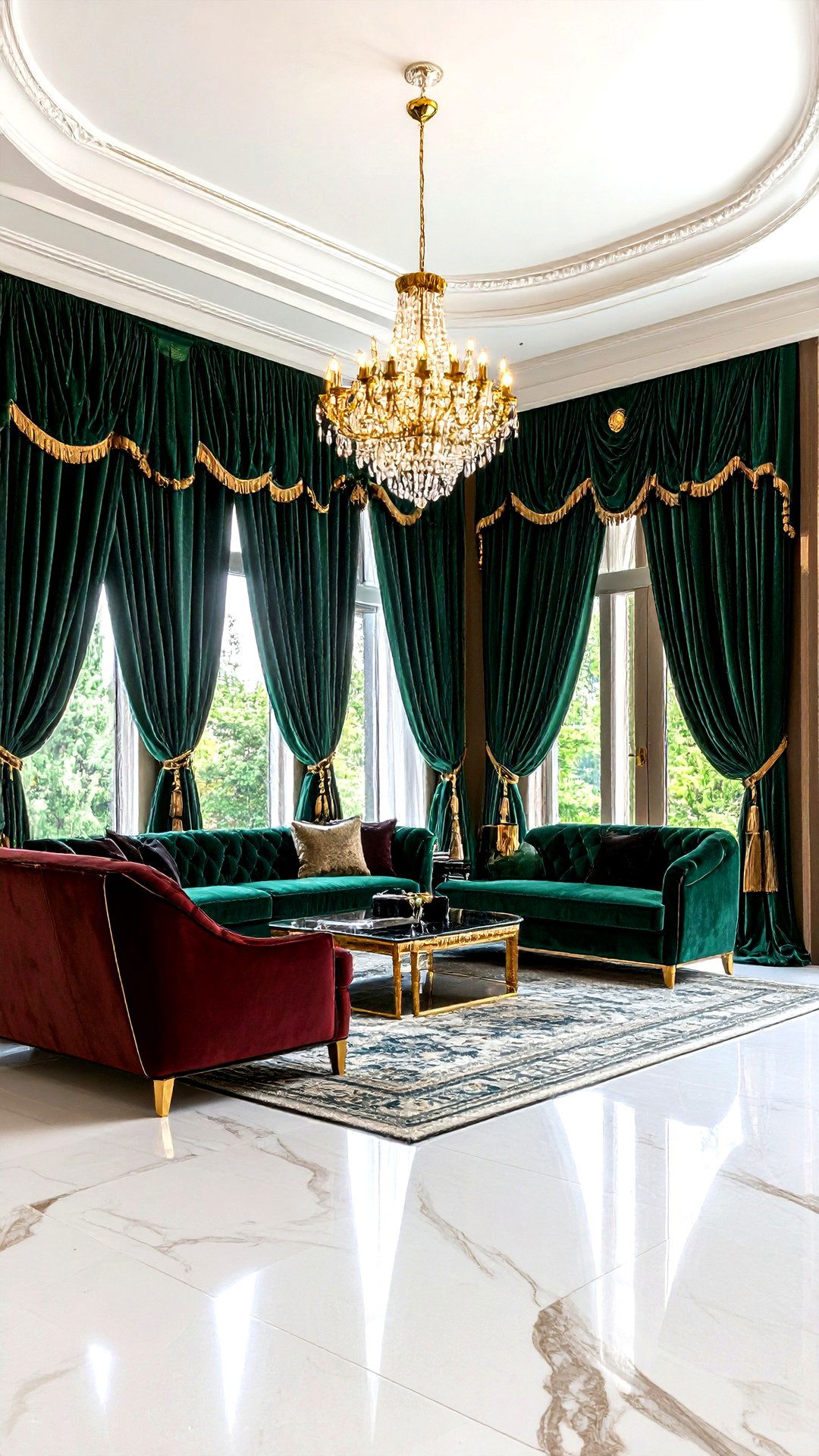
Drapes in emerald, sapphire, or amethyst velvet inject opulence while honoring typical Art Deco color palettes. Hang them from ceiling-mounted rods so fabric pools slightly on the floor, emphasizing vertical lines and height. Pair with geometric tiebacks — perhaps chrome half-circles — to continue thematic shapes. Thick blackout lining improves energy efficiency and light control, crucial for movie-night ambience. Because jewel tones pair well with metallics and neutrals alike, these drapes adapt as you refresh furniture, providing long-lasting luxury that feels both dramatic and grounding.
23. Art Deco Fluted Glass Accents
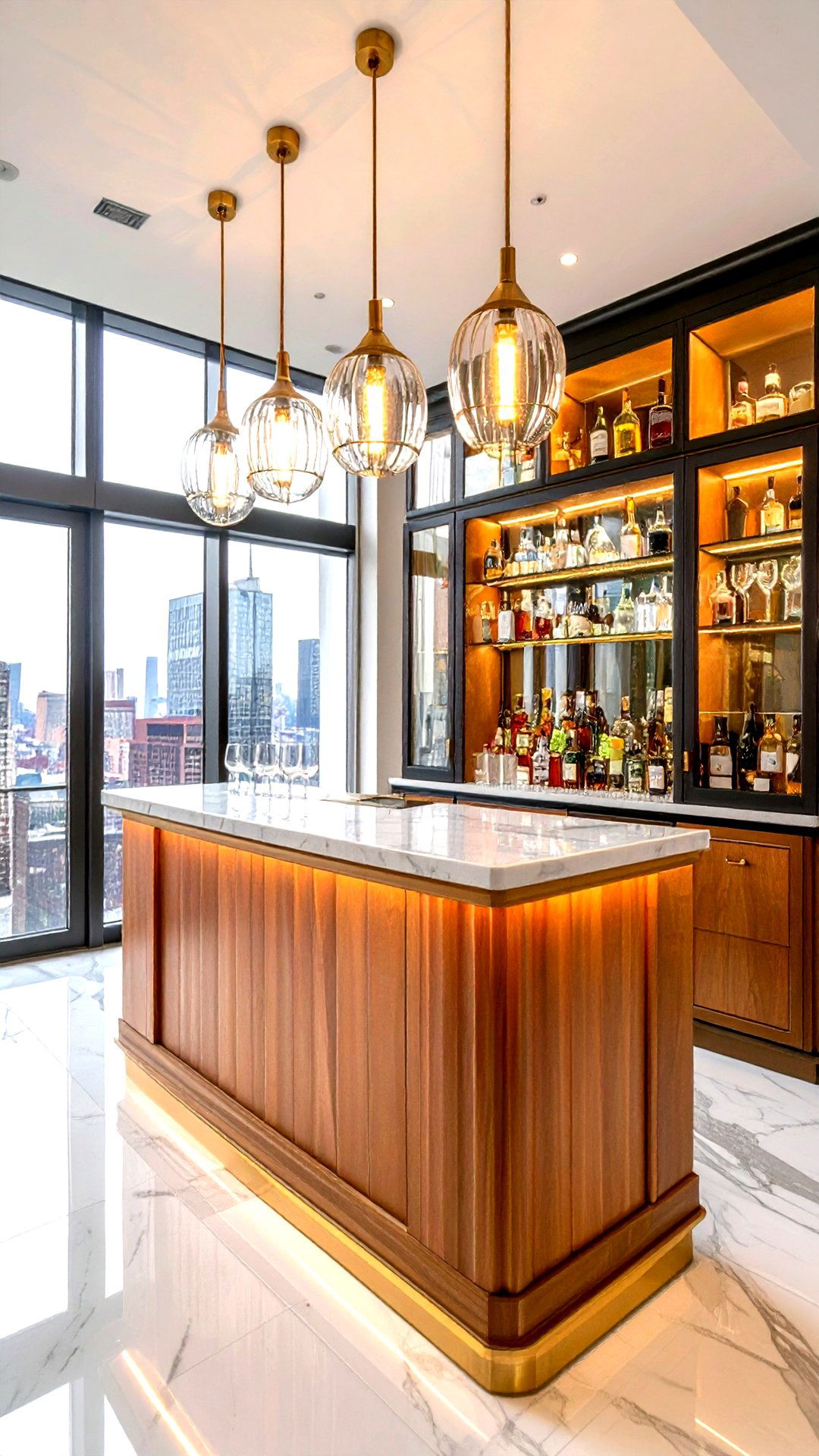
From bar cabinets to bathroom sconces, fluted glass infuses spaces with subtle Deco rhythm. Swap plain cabinet doors for smoked fluted inserts that blur contents while allowing a glow of color through cocktail-hour backlighting. The linear texture echoes skyscraper ribs, adding interest without heavy ornament. Clean with microfiber cloths to avoid trapping lint in grooves. Whether featured in pendant shades or vase surfaces, fluted glass introduces movement and sparkle, proving small material choices can deliver period authenticity.
24. Art Deco Symmetrical Furniture Layouts
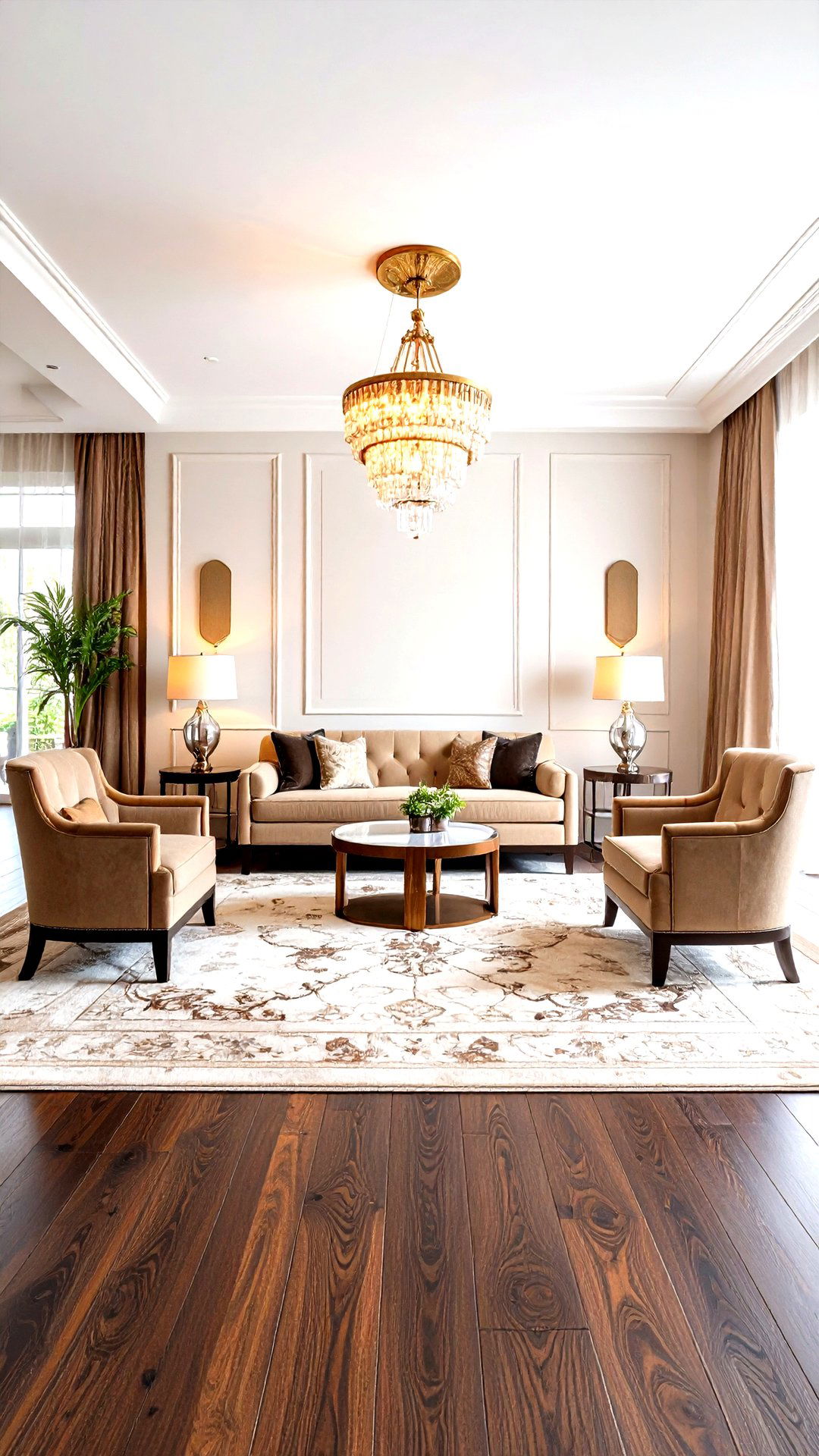
Lay out seating and storage in perfect bilateral balance — a sofa flanked by twin armchairs, matching side tables crowned with identical lamps. This arrangement echoes Art Deco’s architectural symmetry, making rooms feel orderly and serene. Mark the centerline with a rug’s medallion or a coffee table’s midpoint to keep alignment precise. Symmetry not only pleases the eye but also supports easy traffic flow, beneficial for entertaining. Should furniture styles vary, unify them with matching upholstery or repeated metallic accents so the mirrored composition reads intentional rather than coincidental.
25. Art Deco Layered Hardware Finishes
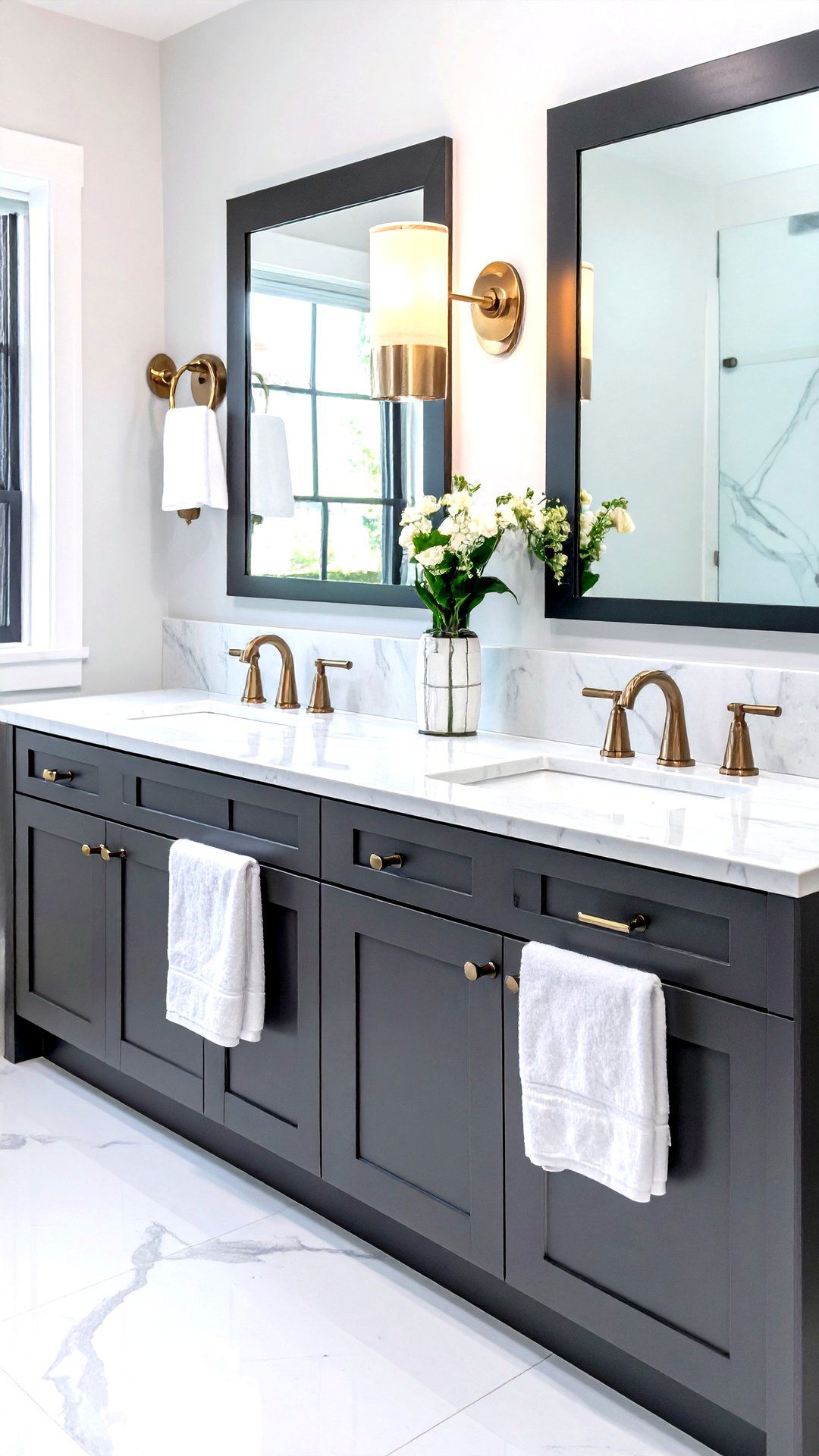
While consistency matters, Art Deco interiors also relish subtle layering of metallic hues. Combine polished nickel faucets with brushed-brass vanity sconces and a blackened-steel mirror frame. Keep each finish to at least two elements so no single tone appears accidental. The trio sparkles individually yet harmonizes through shared cool undertones. Period spaces often embraced this mix to showcase new industrial materials of the day. Modern replicas carry the look forward, allowing you to celebrate diversity in shine without sacrificing cohesion. Regular gentle cleaning preserves luster, ensuring your hardware ensemble ages gracefully together.
Conclusion:
Reviving Art Deco design isn’t about museum-perfect replicas; it’s about channeling the period’s confident lines, rich materials, and optimistic spirit into spaces that suit contemporary life. Whether you introduce mirrored walls, bold geometric rugs, or even just streamlined hardware, each choice layers history with modern comfort. The key lies in balance — pairing striking patterns with calm solids, mixing luxe finishes with practical durability, and repeating motifs so rooms feel intentional. Embrace symmetry, celebrate craftsmanship, and let metallic flashes mingle with plush textures. Done thoughtfully, these Art Deco ideas will infuse any home with timeless sophistication and a dash of roaring-twenties glamour.


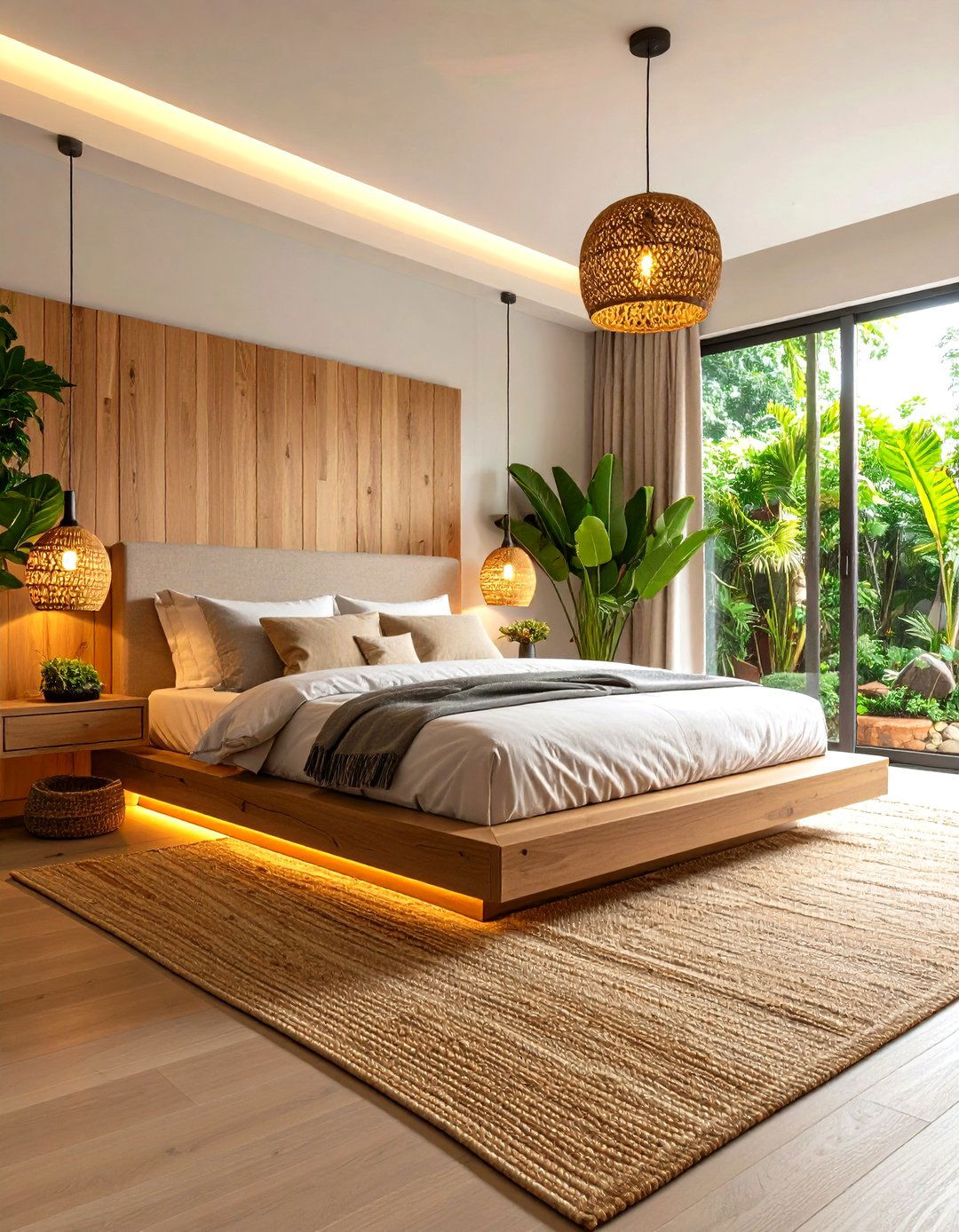
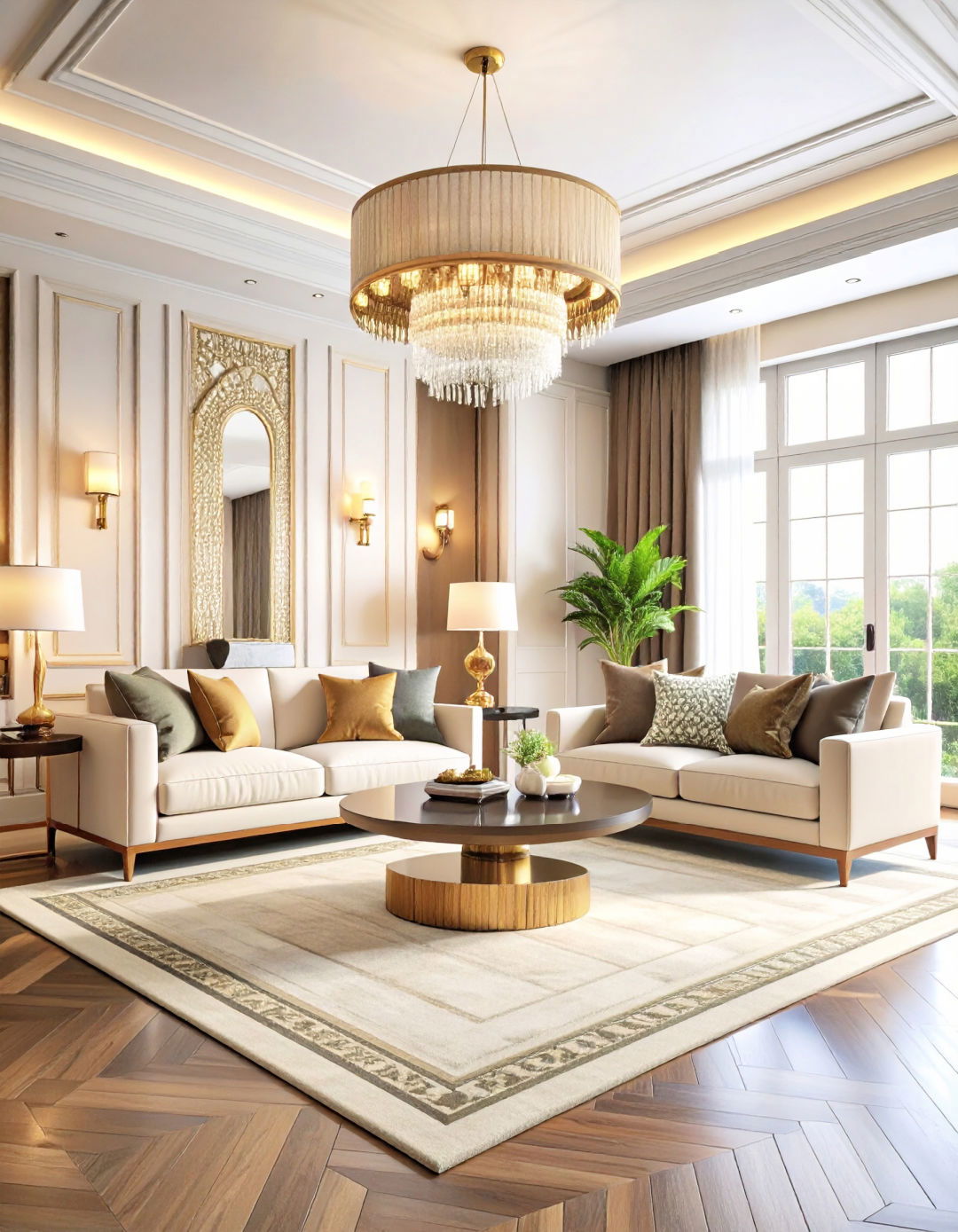
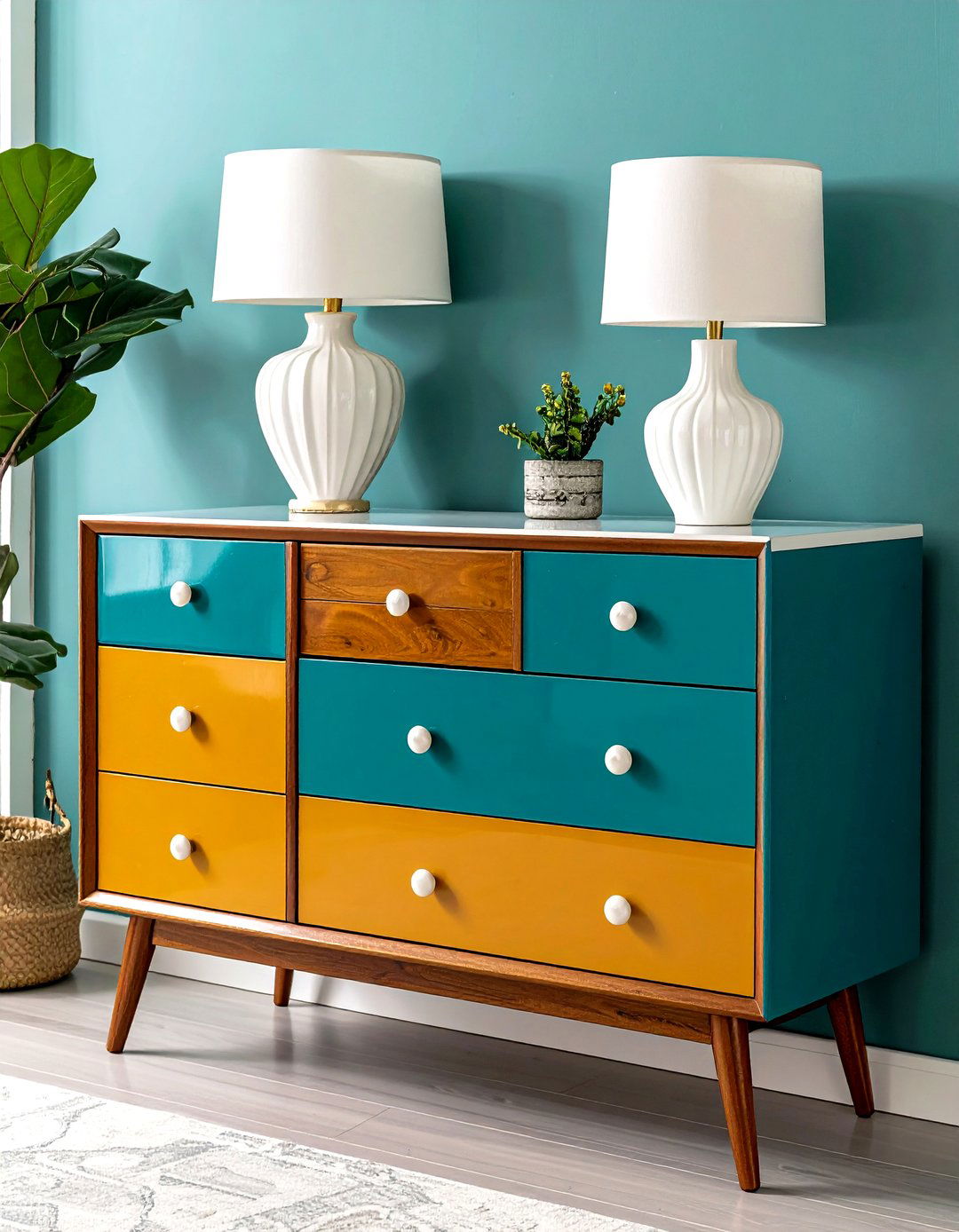
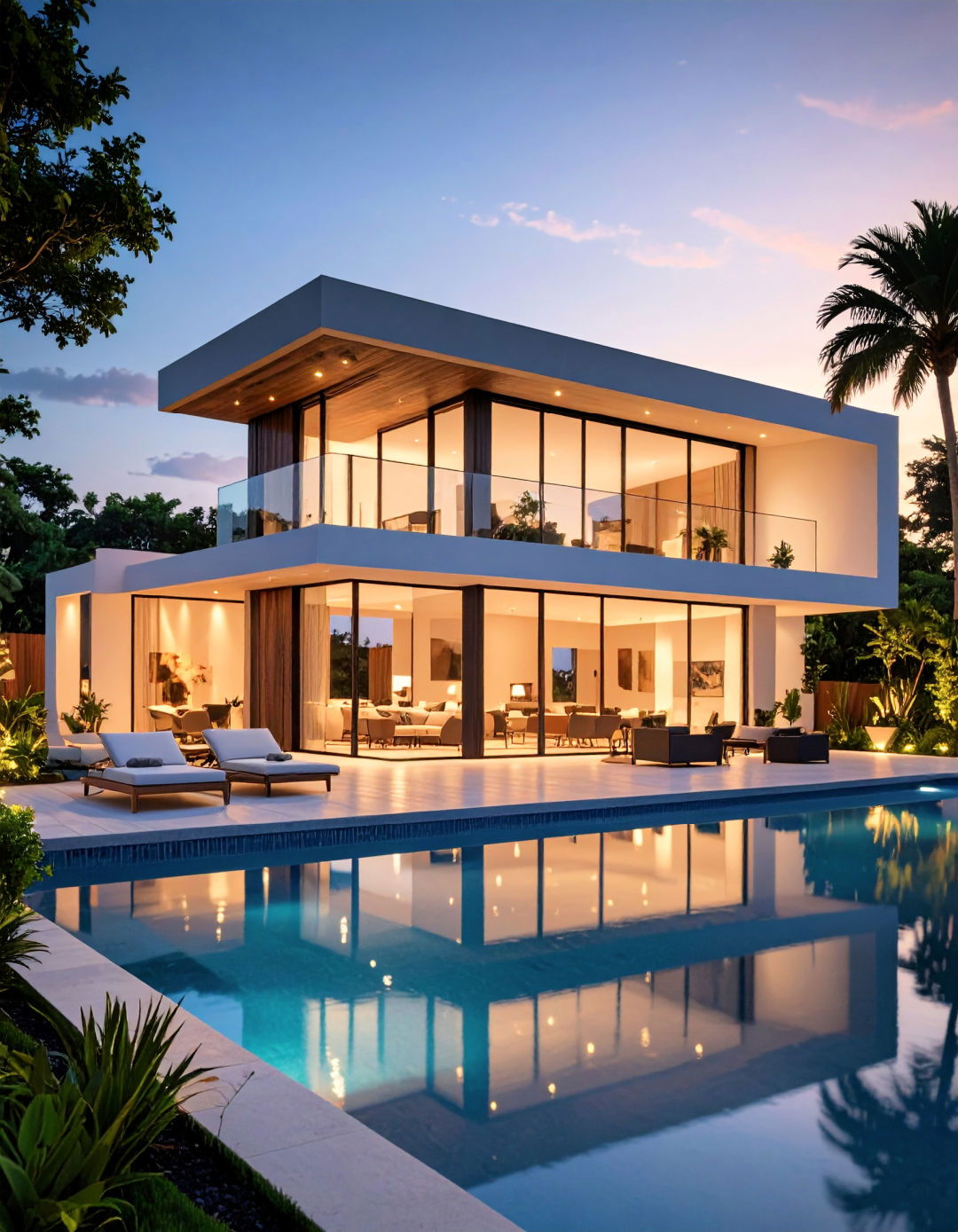
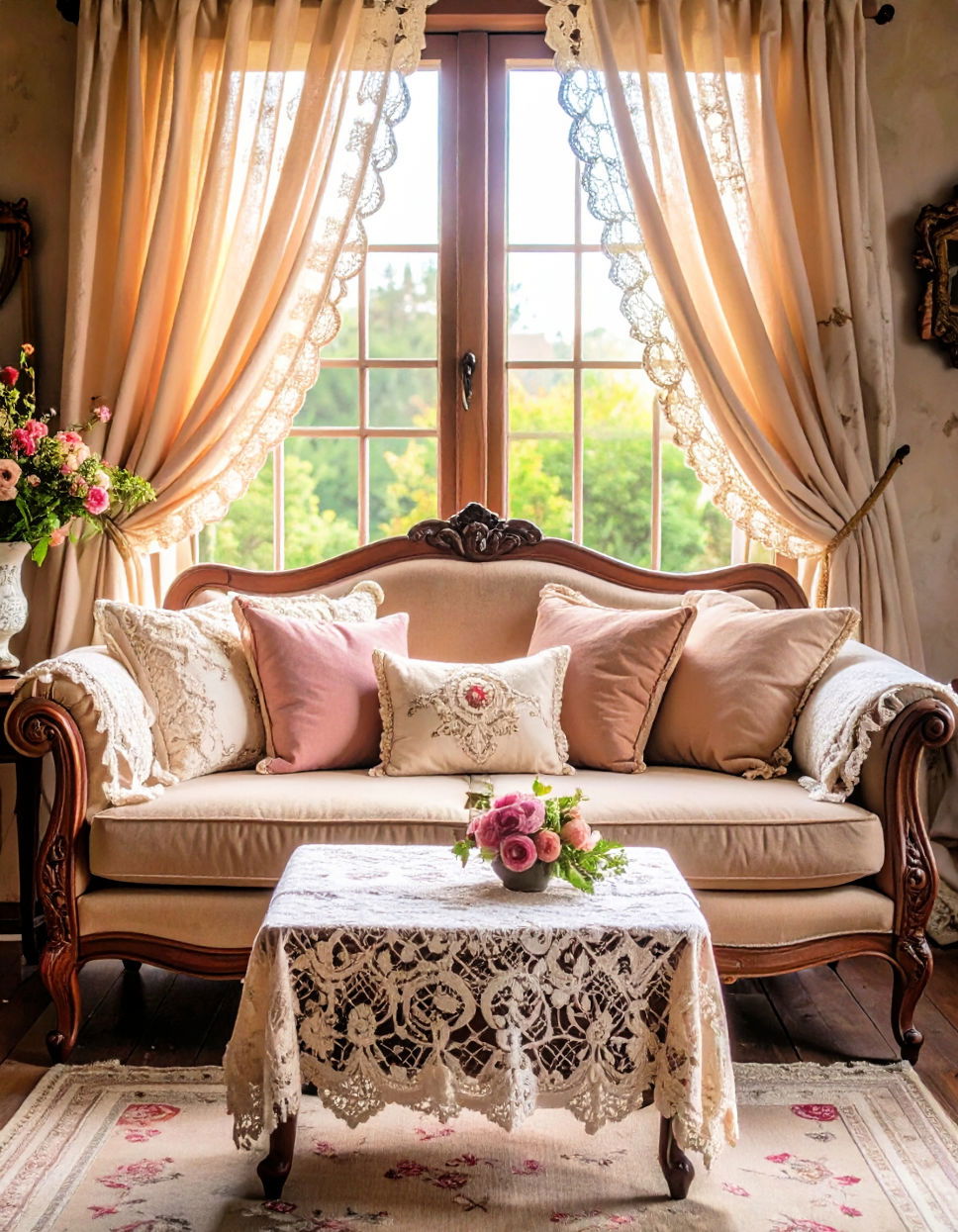
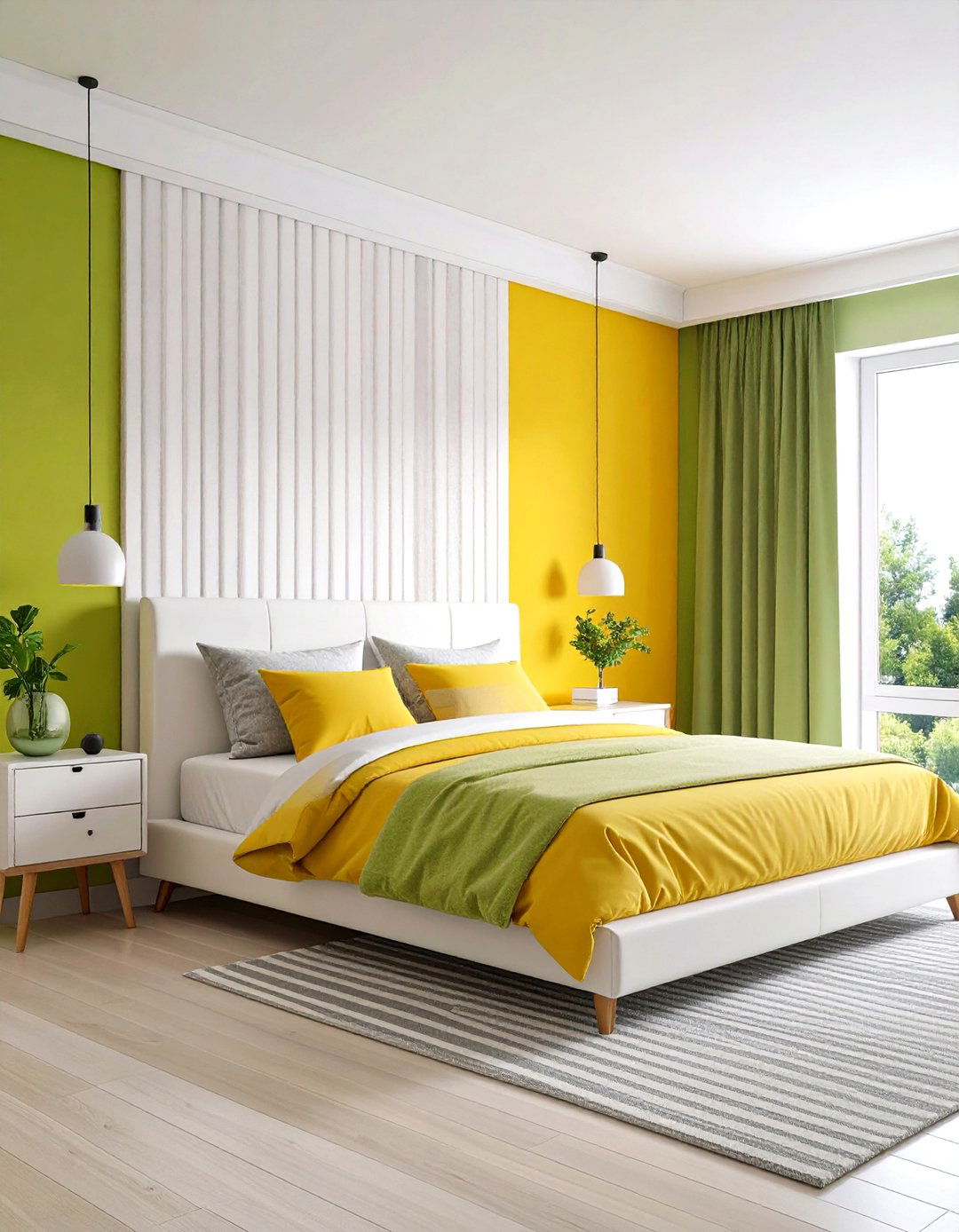
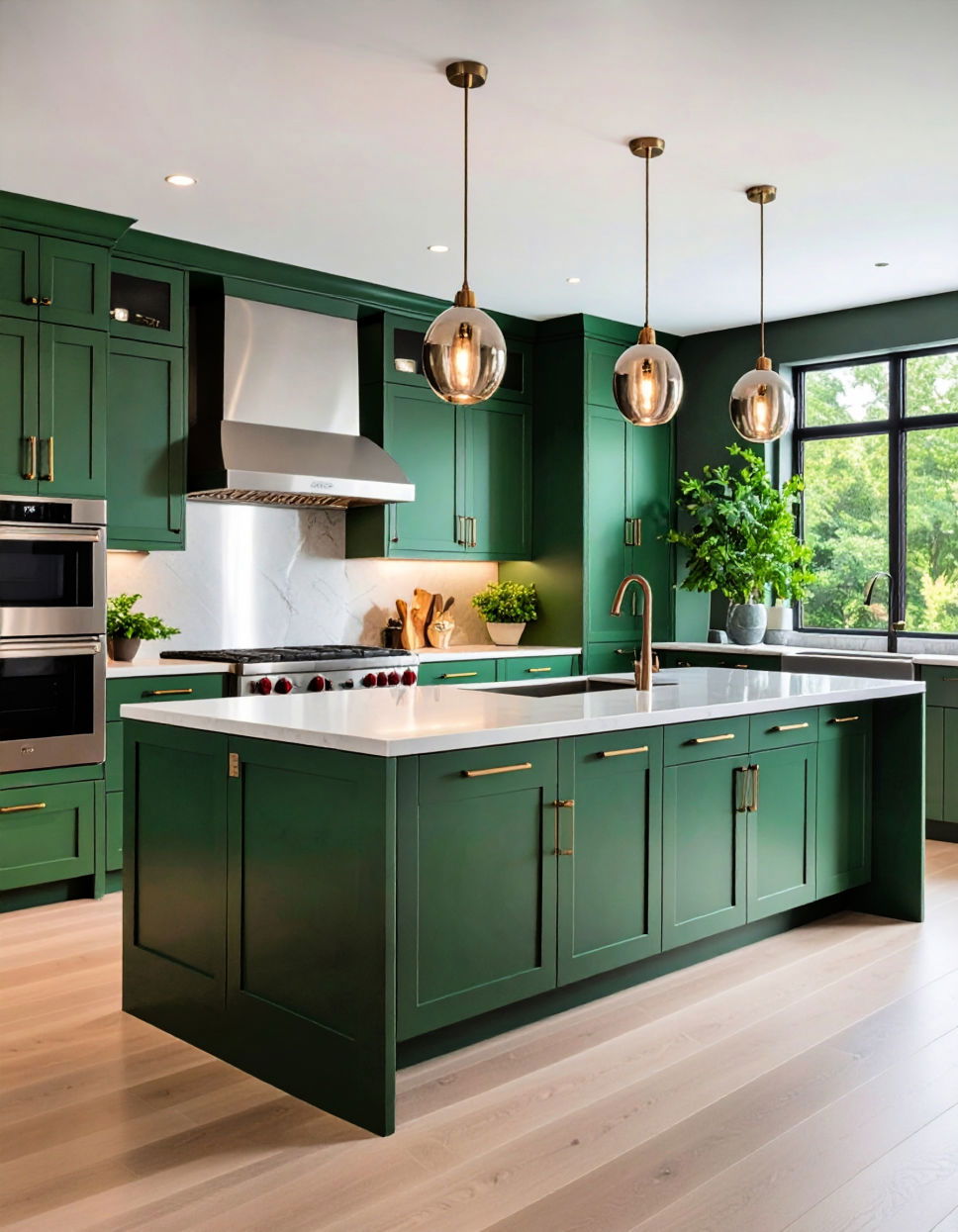
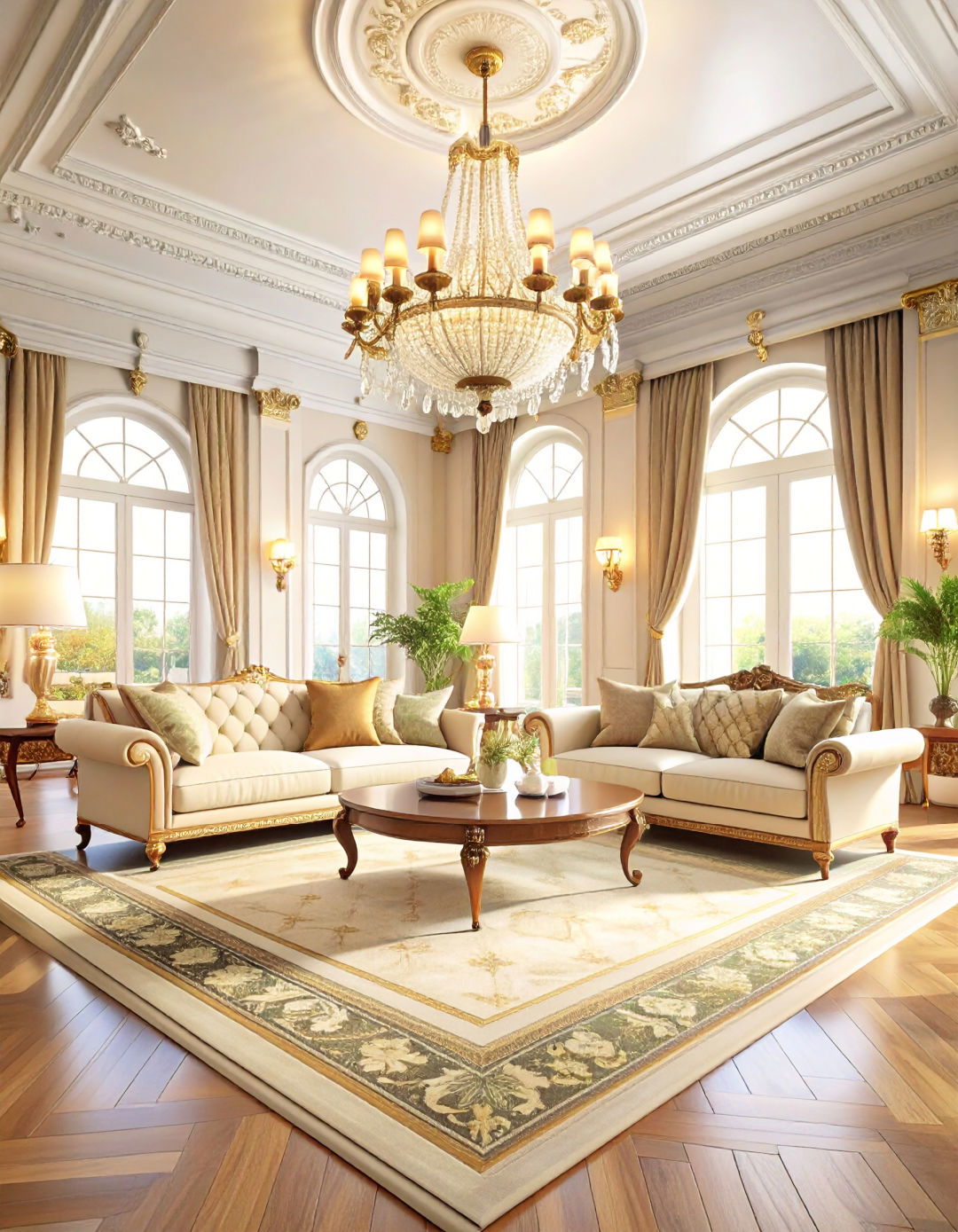

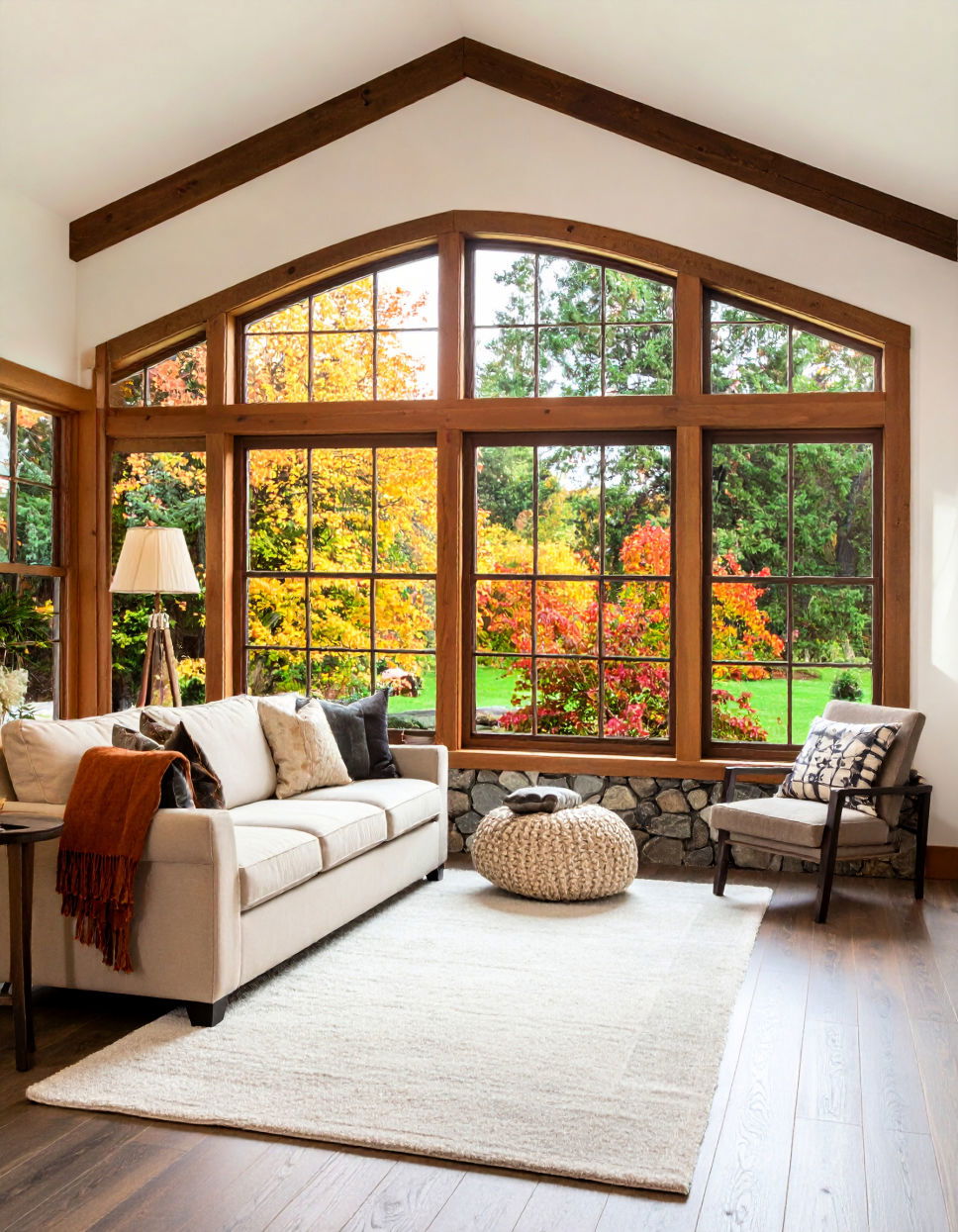



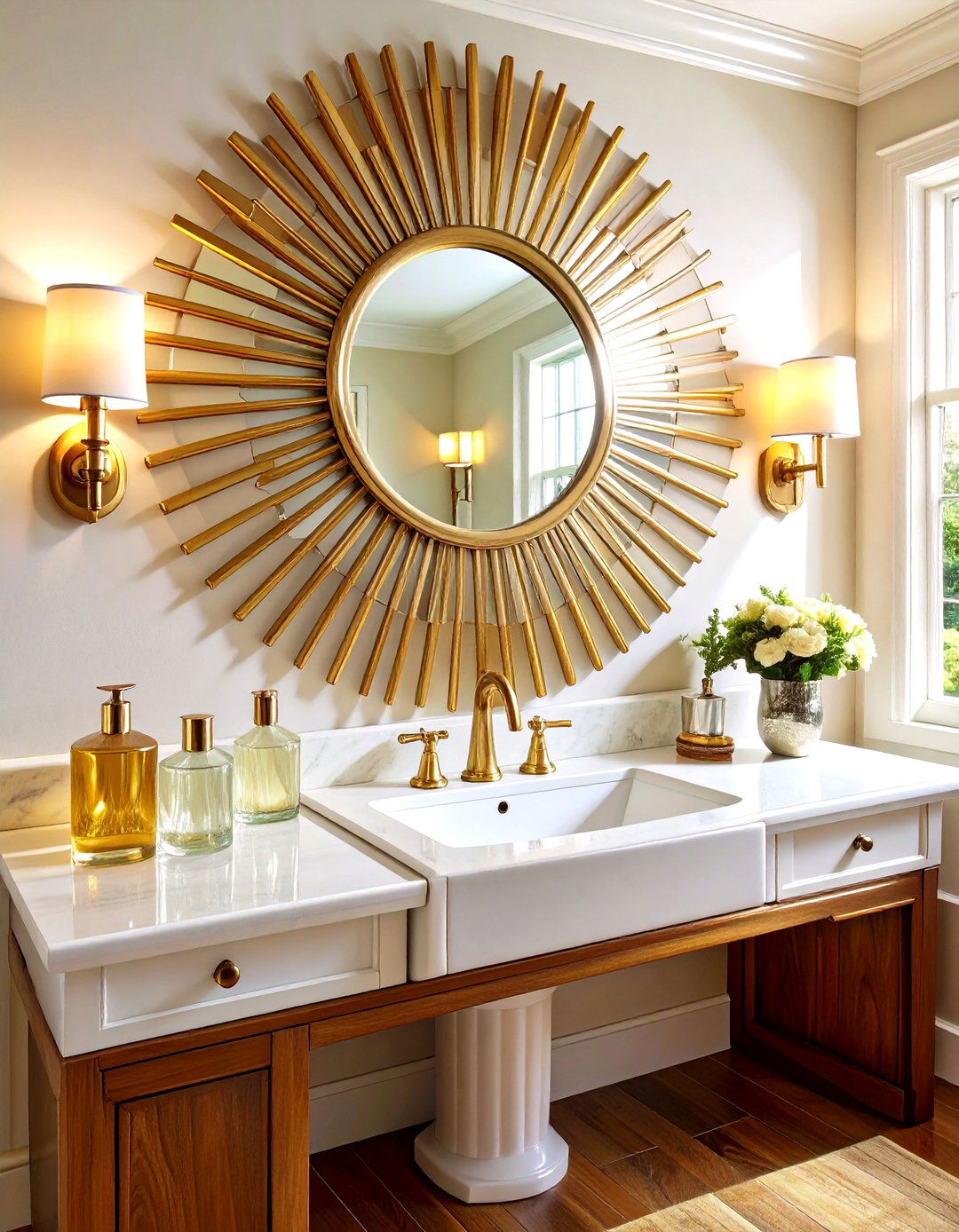
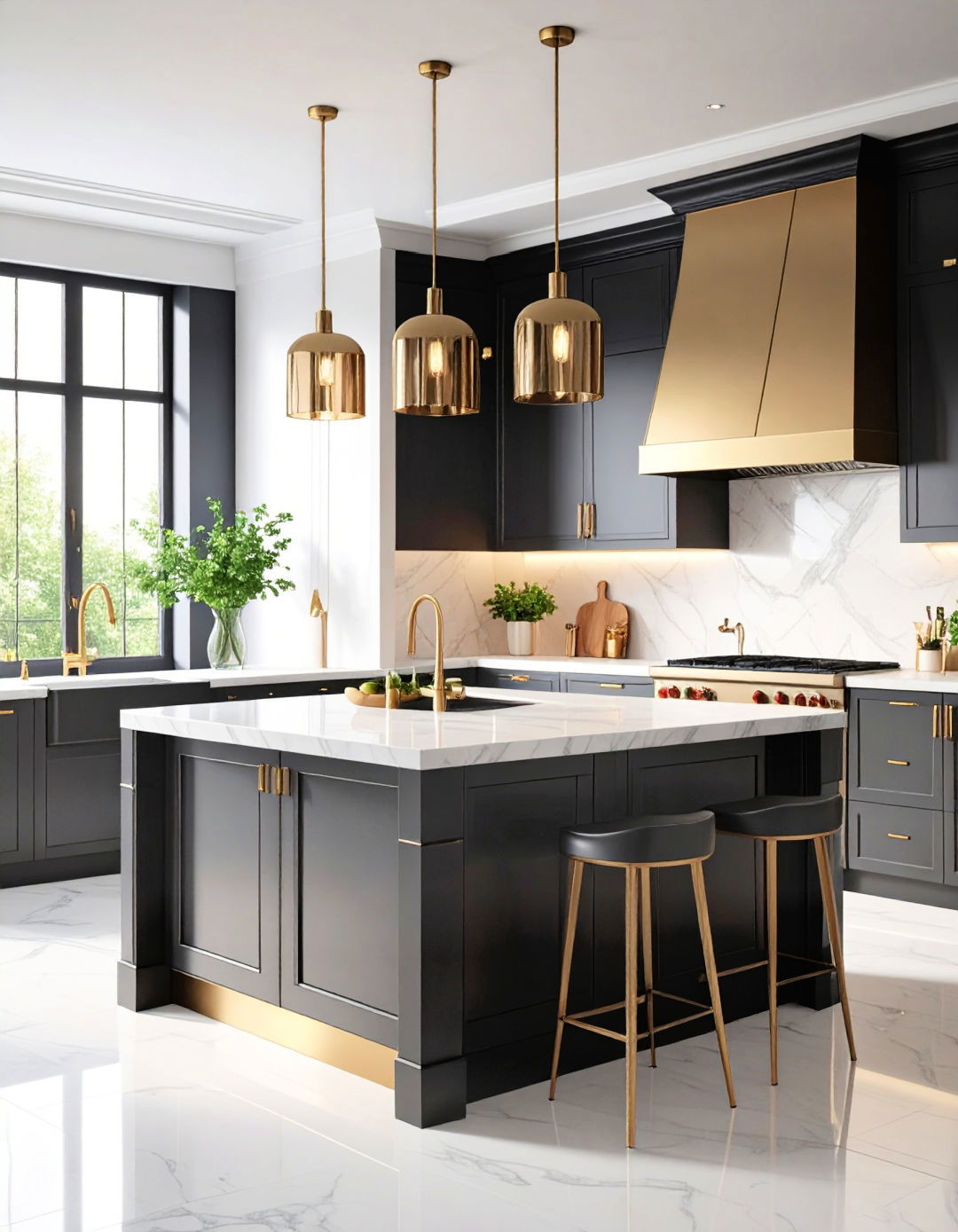
Leave a Reply